Brookgreen Gardens – A Sculptural Masterpiece
It was over twenty years ago that Alison and I first visited Brookgreen Gardens in Murrell’s Inlet, just south of Myrtle Beach. We did it more by chance than planning as we were headed south on U.S.17 for our annual sojourn to Sanibel, Florida and came across this impressive sculpture at the entrance and decided to go in.
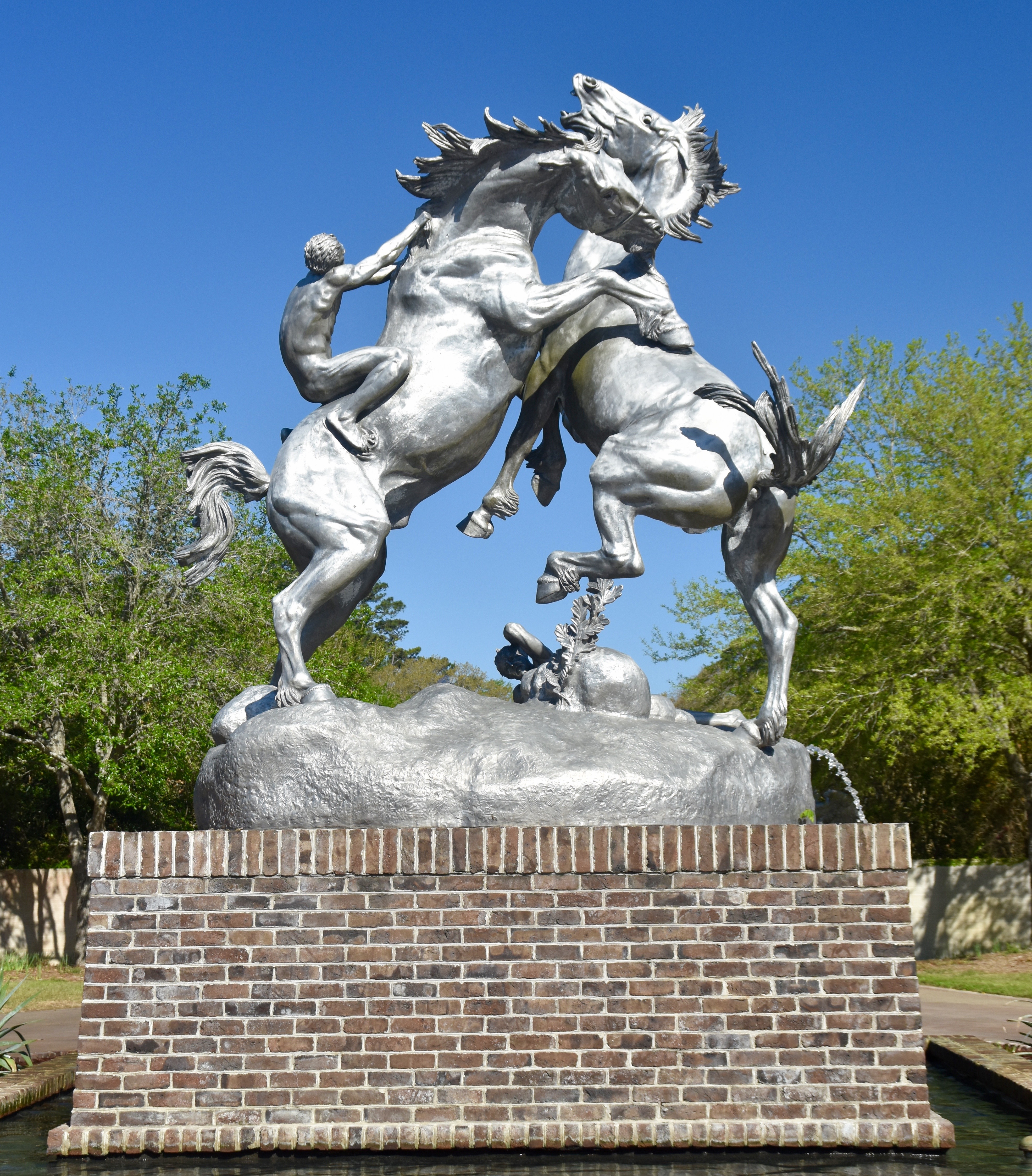
After spending several hours touring the extensive grounds and viewing the many, many excellent sculptures, I asked myself, “Why isn’t this place better known?” To me it was the premiere attraction in the Myrtle Beach area and a world class sculpture garden. Recently we returned and found that time had not diminished our recollection of Brookgreen Gardens – it is definitely one of the best sculpture gardens in the world, but much more than that as we were to find out on our second visit. Won’t you join us in finding out why?
History of Brookgreen Gardens
Brookgreen Gardens is the product of one amazing couple that combined philanthropy, an unquenchable thirst for knowledge and artistic talent to create a gift for the people of South Carolina that keeps on growing in stature with every passing year. Archer Milton Huntington was the type of American that unfortunately we don’t see enough of today. Born with a silver spoon in his mouth as the scion (actually stepson) of a wealthy railroad magnate, he chose not to use his wealth for personal aggrandizement, but rather in ways that would benefit the public and enrich himself through learning and study. He was a world recognized scholar in Hispanic Studies and donated huge sums of his fortune to various artistic and charitable purposes.
In his middle age Huntington met and married Anna Hyatt Huntington, already a well-known sculptress who ultimately created works well into her nineties. The two formed a dynamic duo that left a legacy in over twenty museums and a number of wildlife preserves.
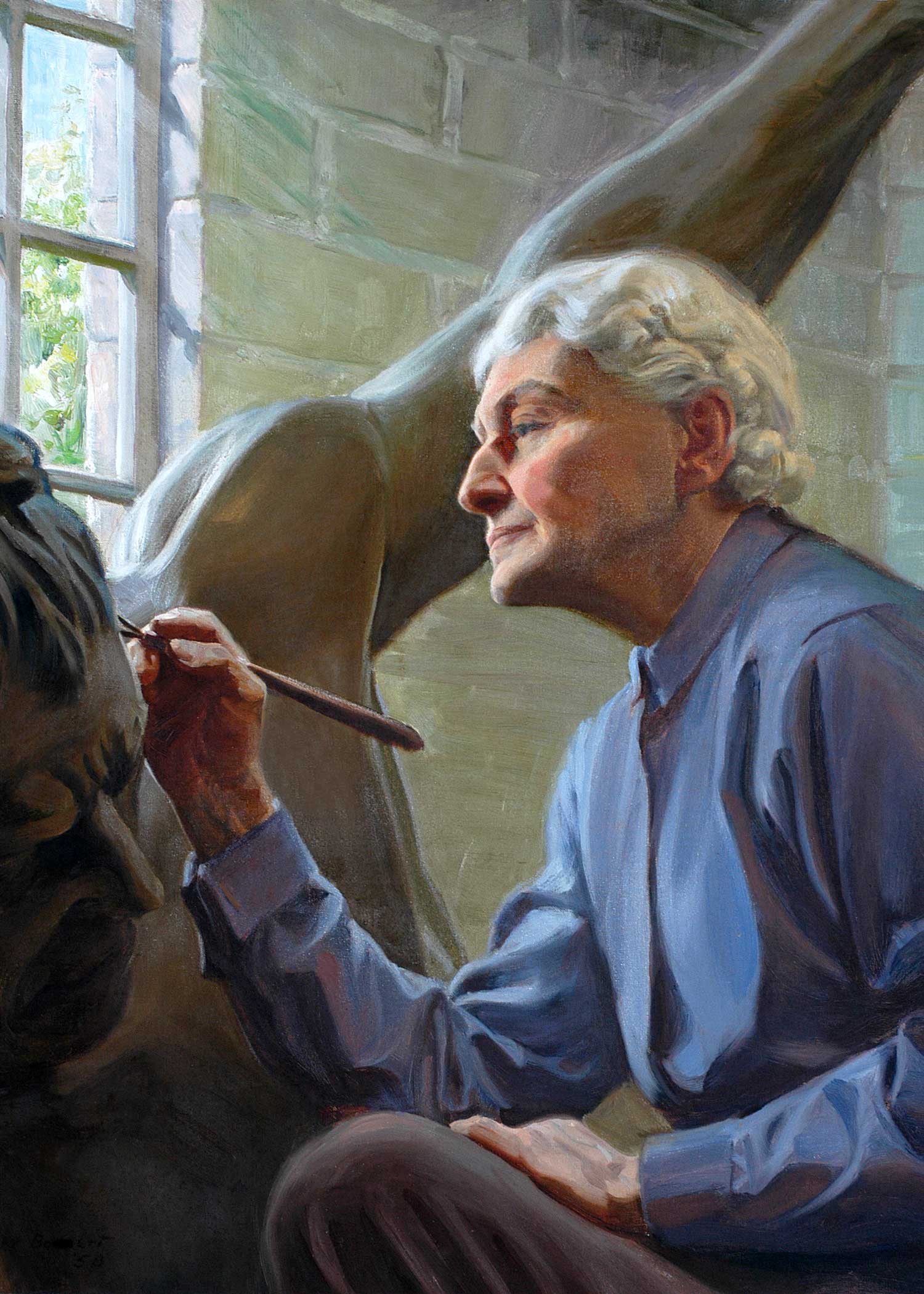
In 1930, just as the depression was getting underway they purchased a huge swath of land south of Myrtle Beach that included miles of coastline and four separate historic plantations. In a previous post I described a visit to Huntington Beach State Park which contained the Huntington’s winter home at Atalaya and ultimately one of South Carolina’s most popular and diverse state parks.
In 1931 the land on the opposite side of Highway 17, which contained the bulk of the old plantations, was incorporated as the not-for-profit Brookgreen Gardens and has operated as such ever since. The entire site is a massive 9,127 acres in size and although the Botanical Gardens and American Sculpture Garden seem huge when you visit them, they actually occupy only a fraction of the total property.
Here is a copy of the map you get on entry, but it does not show various trips you can book to parts of the gardens most tourists don’t see. I’ll get to one of those later.
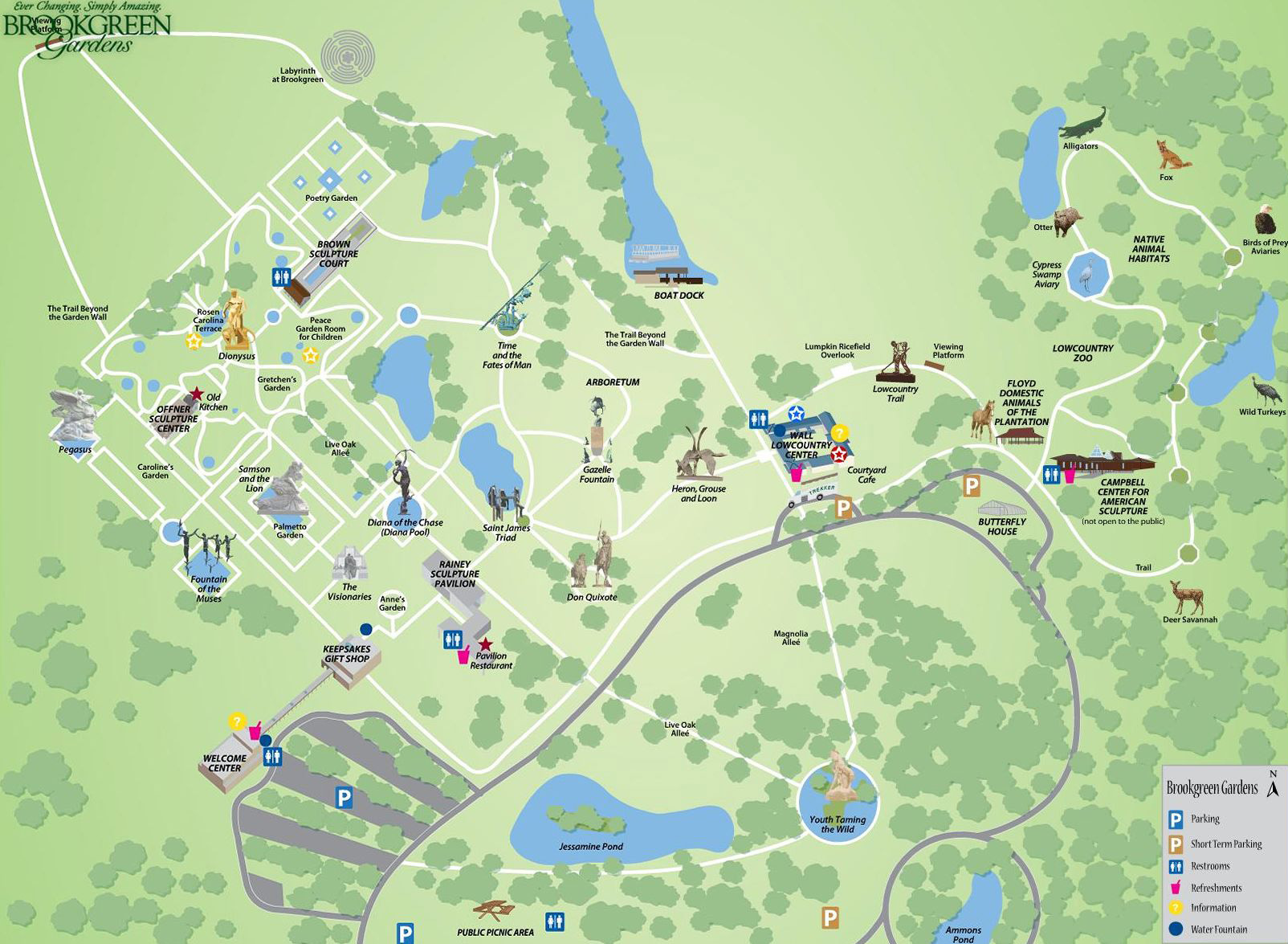
Visiting Brookgreen Gardens
Entrance to Brookgreen Gardens is $18.00 ($16.00 for seniors), but the ticket is good for a week and if you actually used it see everything on display it would be considered a bargain price; there are over 1,400 sculptures alone. Tickets for the special trips are extra. My recommendation is that if you are in the Myrtle Beach area for more than a few days that you plan to visit Brookgreen Gardens twice – once to walk around the botanical gardens and sculptures and a second time to take one or more of the special trips on offer, plus visit the Low Country Zoo.
The Botanical Gardens & Sculptures
As you can see from the map above the Botanical Gardens and Sculptures along with a goodly number of fountains and ponds are interspersed – in other words they are not two separate areas, but a combination of colour, water and American sculpture that is eye-pleasing to say the least.
Now I have nothing against abstract art including the abstract sculptures of say Henry Moore or Alberto Giacamotti. They can be very moving in the appropriate context. However, if you prefer you art to be “What you see is what you get.” then Brookgreen Gardens is the place to go. Anna Huntington believed that sculpture should be as natural a representation of the subject in question as possible and that is reflected in her works and those of the many other artists on display. You’ll rarely be asking yourself, “What the hell is that supposed to be?” on a visit here. However, you might want to bone up on your Greek and Roman mythology because many of the sculptures depict scenes from ancient myths that require some understanding of to really get the point.
Here is one of my favourites in that vein.
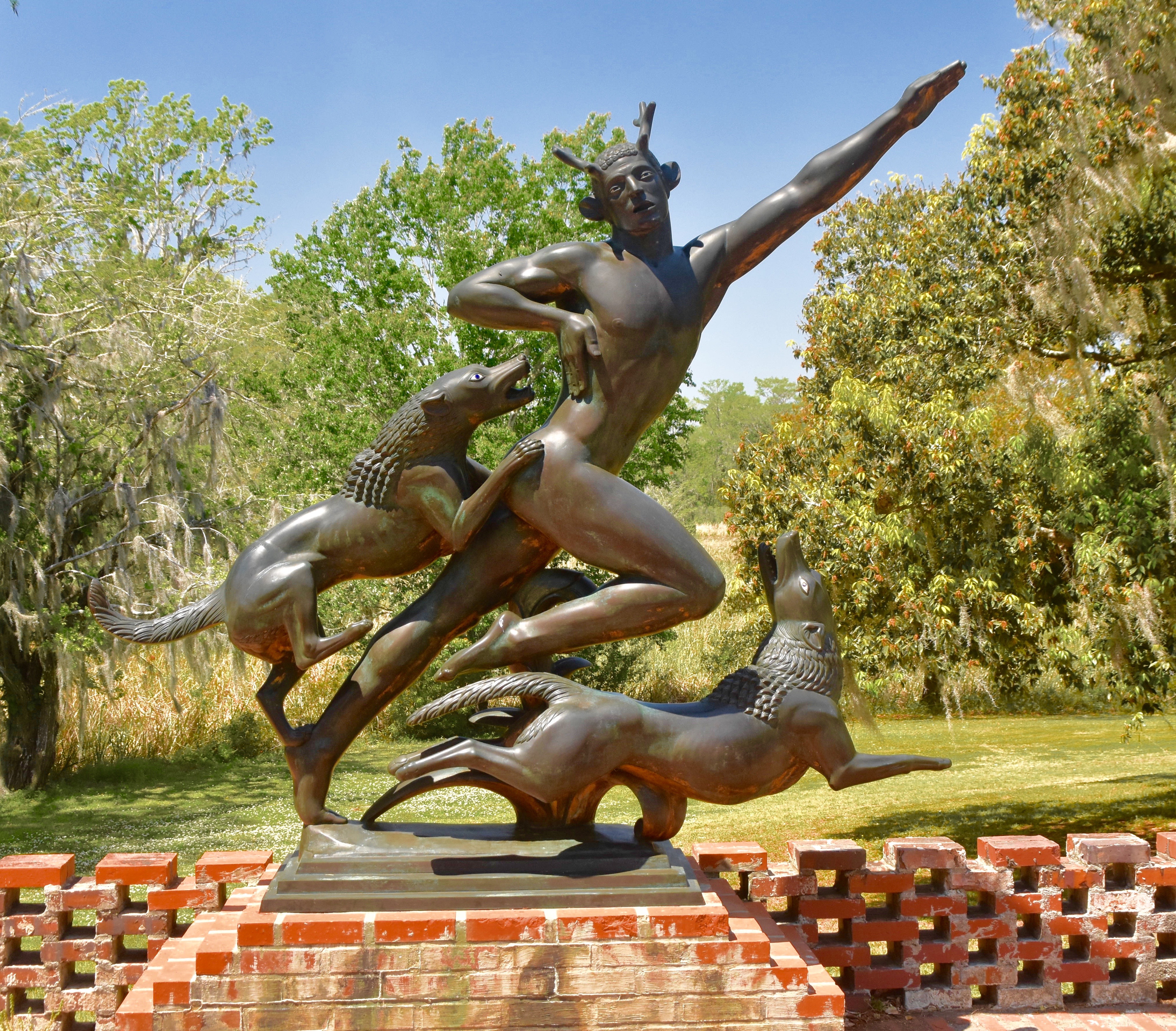
This is Actaeon, who had the misfortune of coming upon the goddess Artemis (Roman Diana) naked at her bath and for this transgression was transformed into a stag and torn to pieces by his own dogs. You can just see the antlers starting to appear on his head. No need for a #MeToo solution in those days.
This sculpture by Paul Manship has a flow that is compounded by the companion piece of Artemis firing her arrow towards the fleeing Actaeon, which stands about fifty feet away. Notice that both sculptures are set in a background of woods and not flowers which makes them all the more compelling. You can see other versions of these sculptures in museums, but I don’t think they would have the same power as they do outdoors.
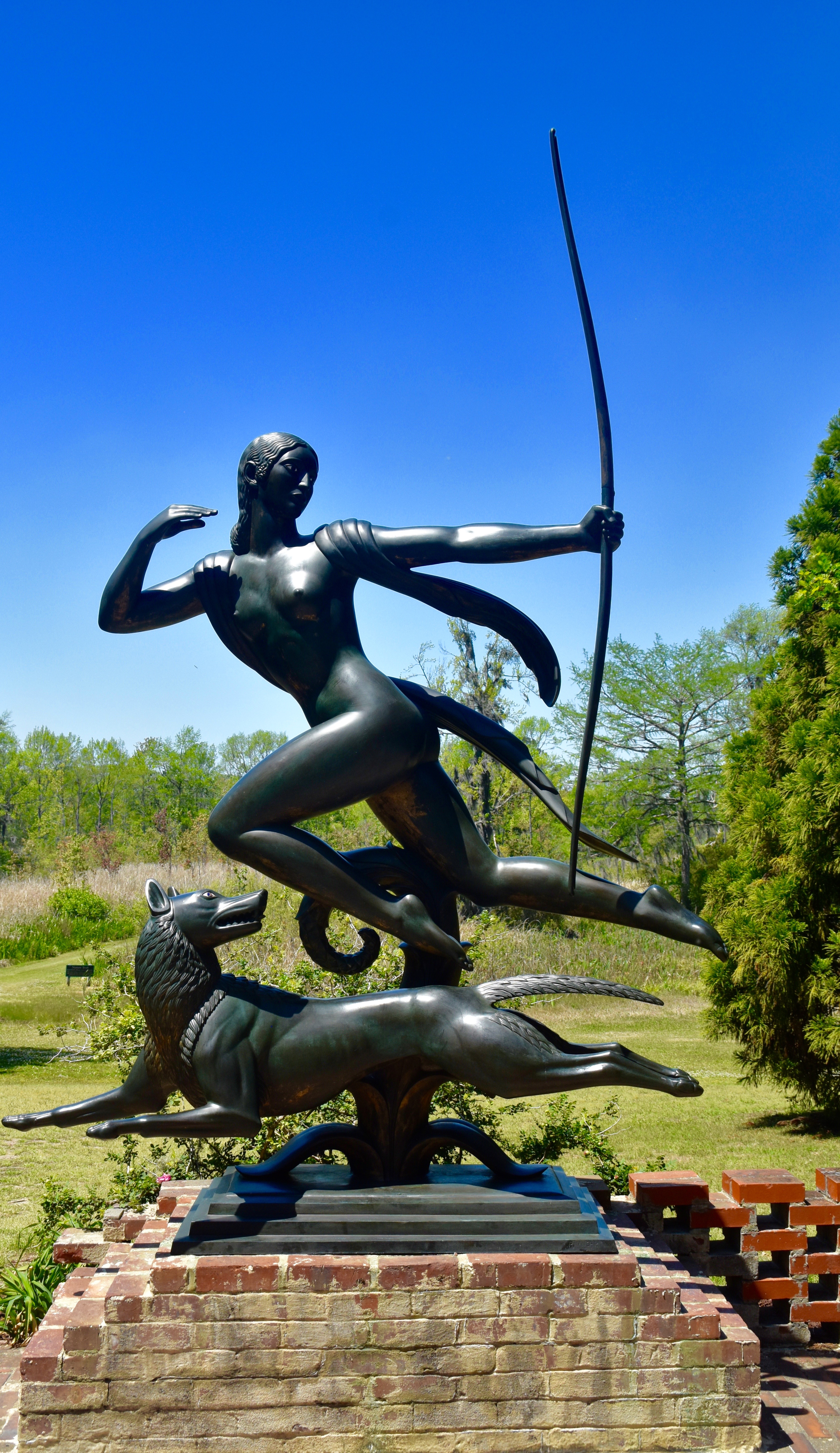
There is no set path for exploring the sculptures and gardens at Brookgreen Gardens so you’ll probably find yourself doing a bit of roaming everywhere. What follows are just a tiny fraction of the many photos I took on the two days we visited – my highlights as it were.
Anna Huntington was fascinated by animals in movement and there is no better example than this at Brookgreen Gardens.
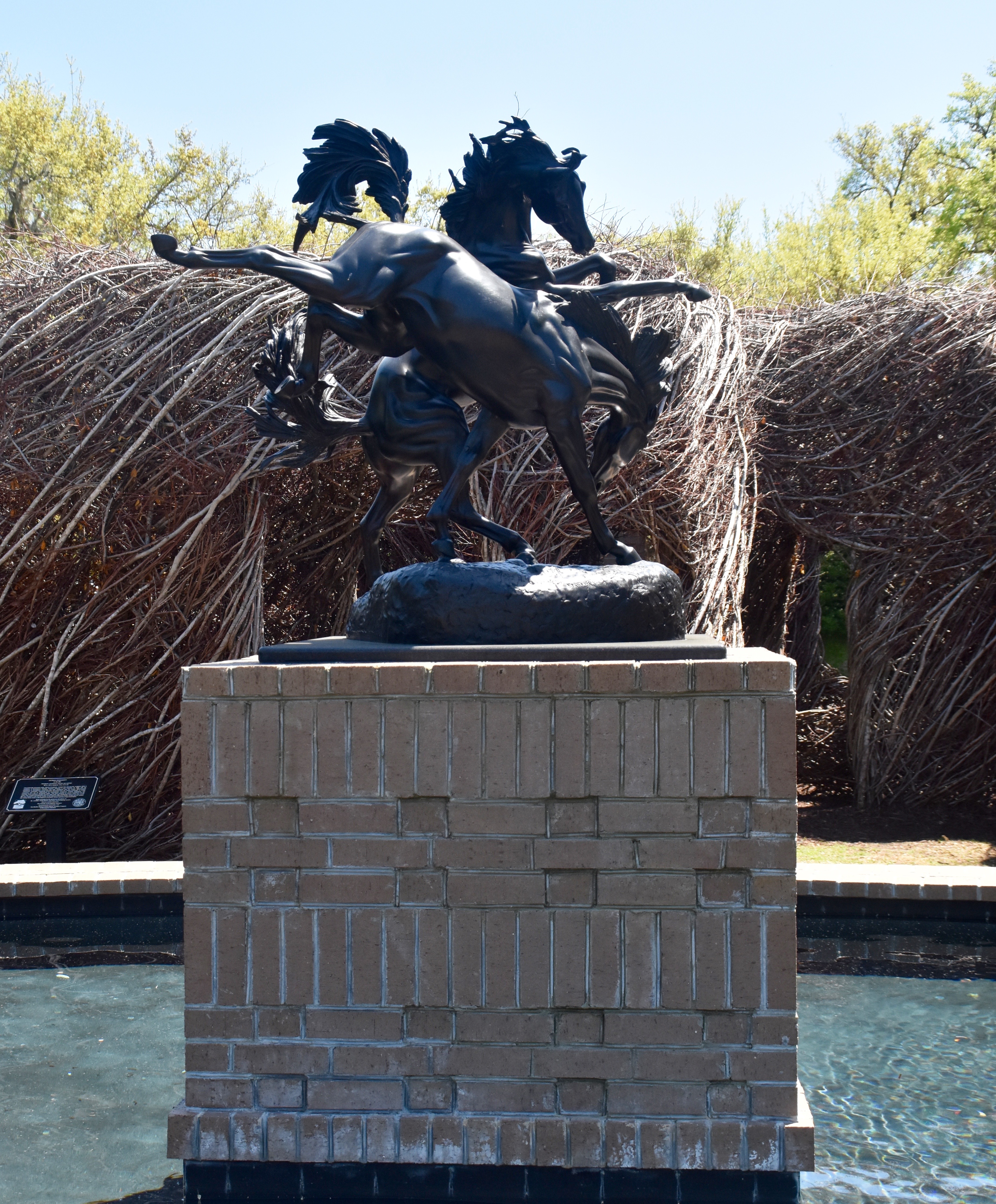
Brookgreen Gardens has a number of aboriginal representations including this one which I don’t think anyone could call patronizing.
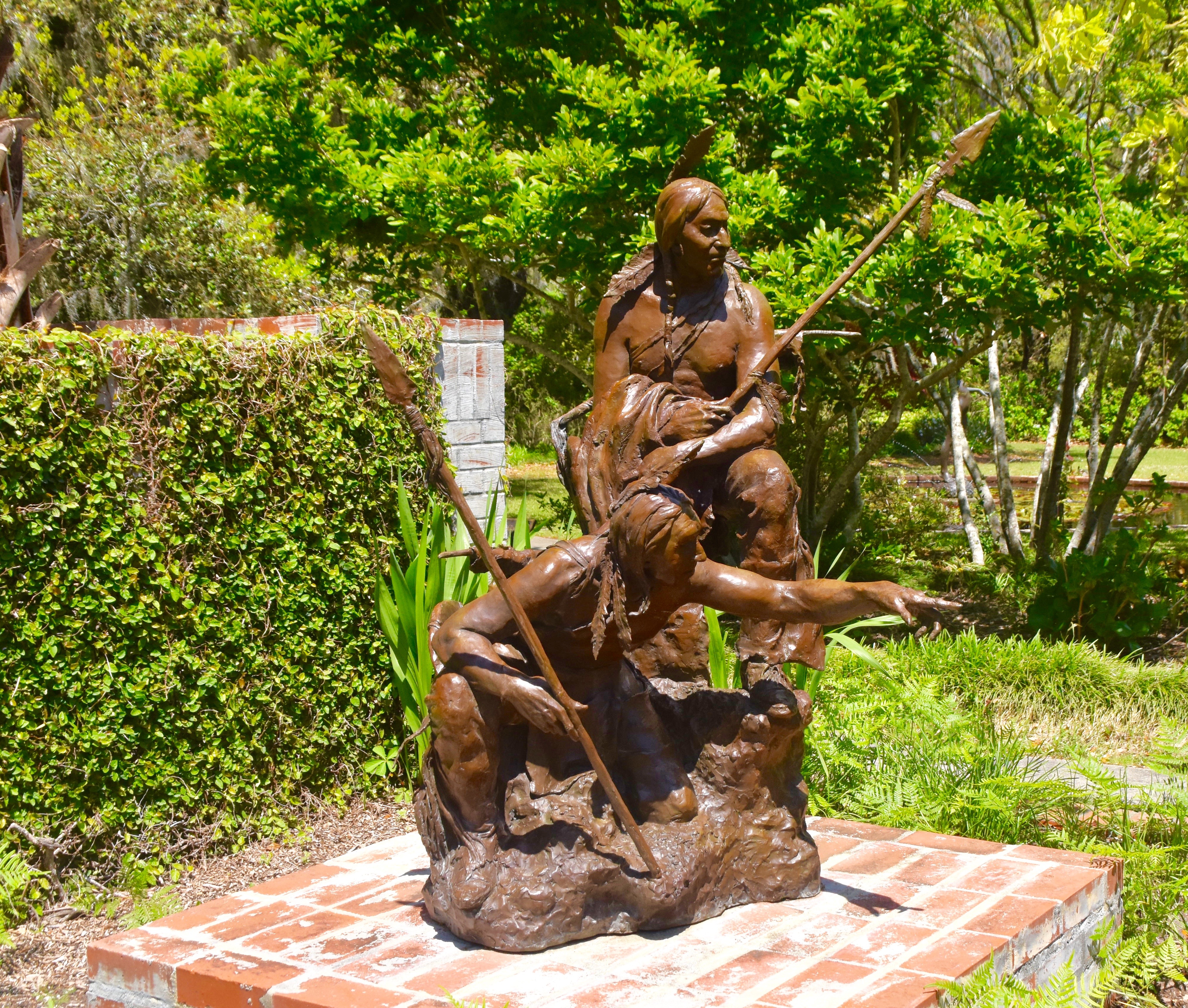
The Fountain of the Muses was originally created by Swedish sculptor Carl Milles for the Metropolitan Museum of Art in New York and then acquired by Brookgreen Gardens in 1982. Milles’ depiction of the nine muses is amazing to see in person and walking around it you get many different perspectives that show how much thought the sculptor put into this creation. Why the Met would de-accession it is beyond me, but it has a great home in South Carolina.
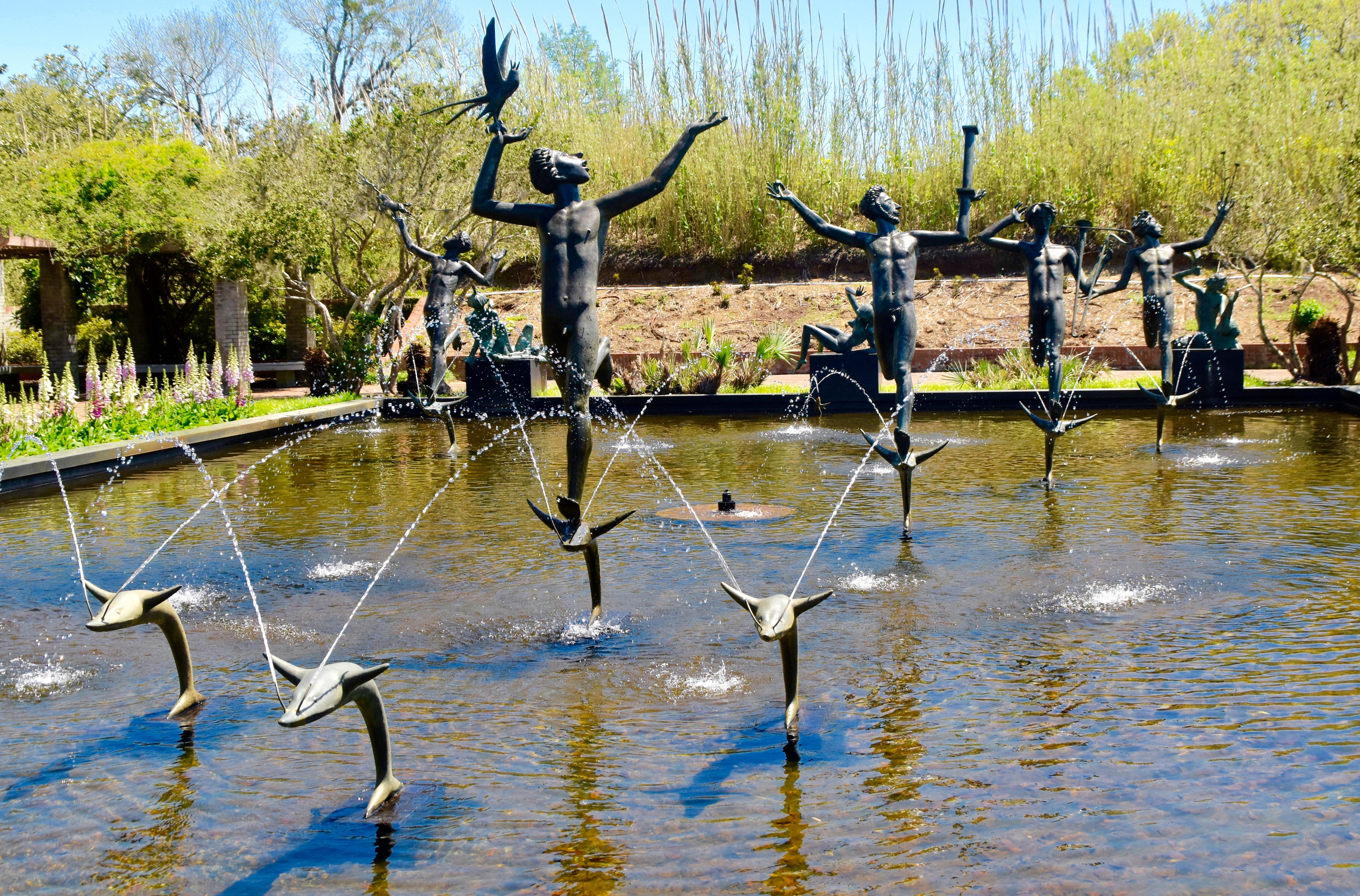
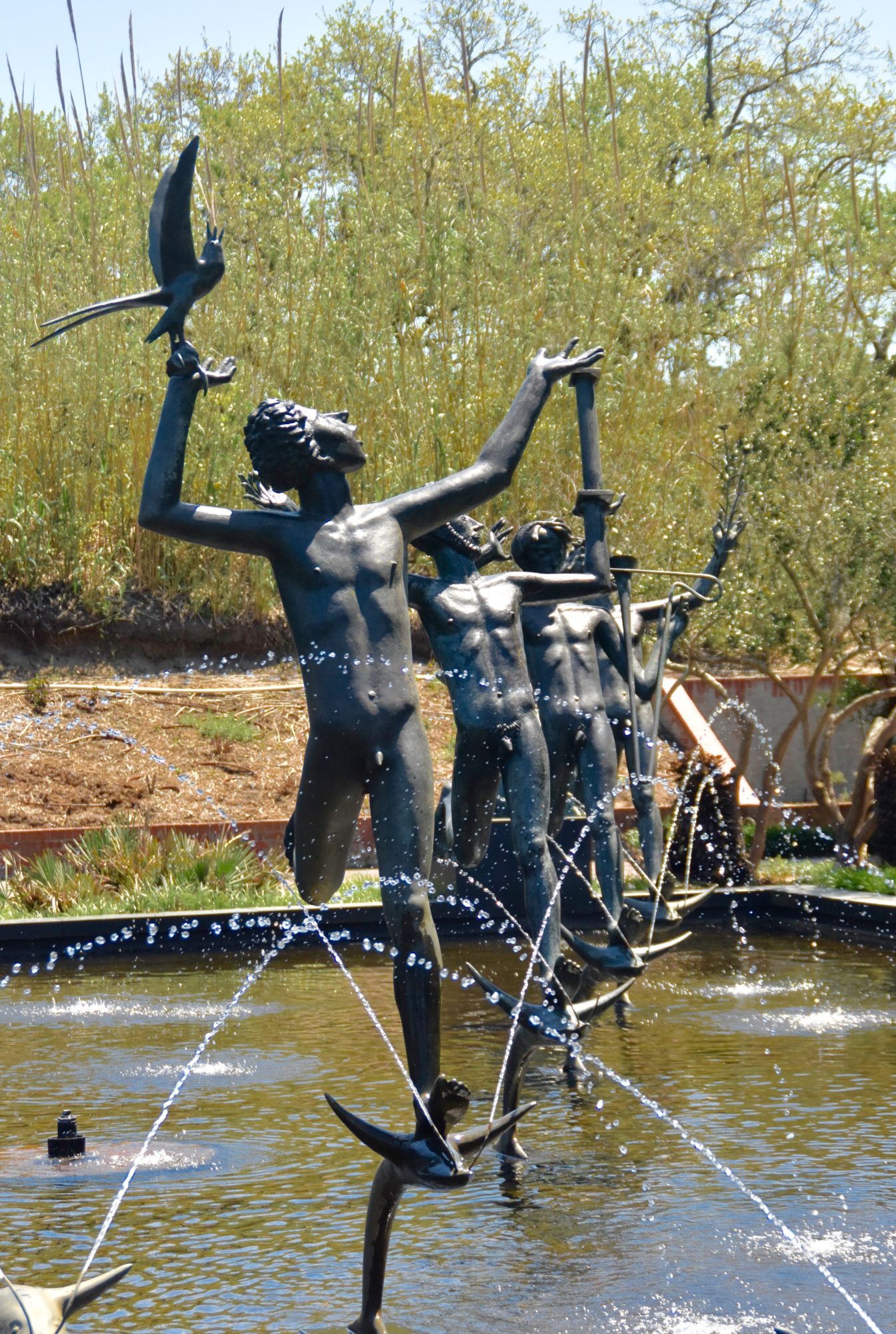
Interestingly, in legend the muses were women and not men or boys. Here is the muse of dance.
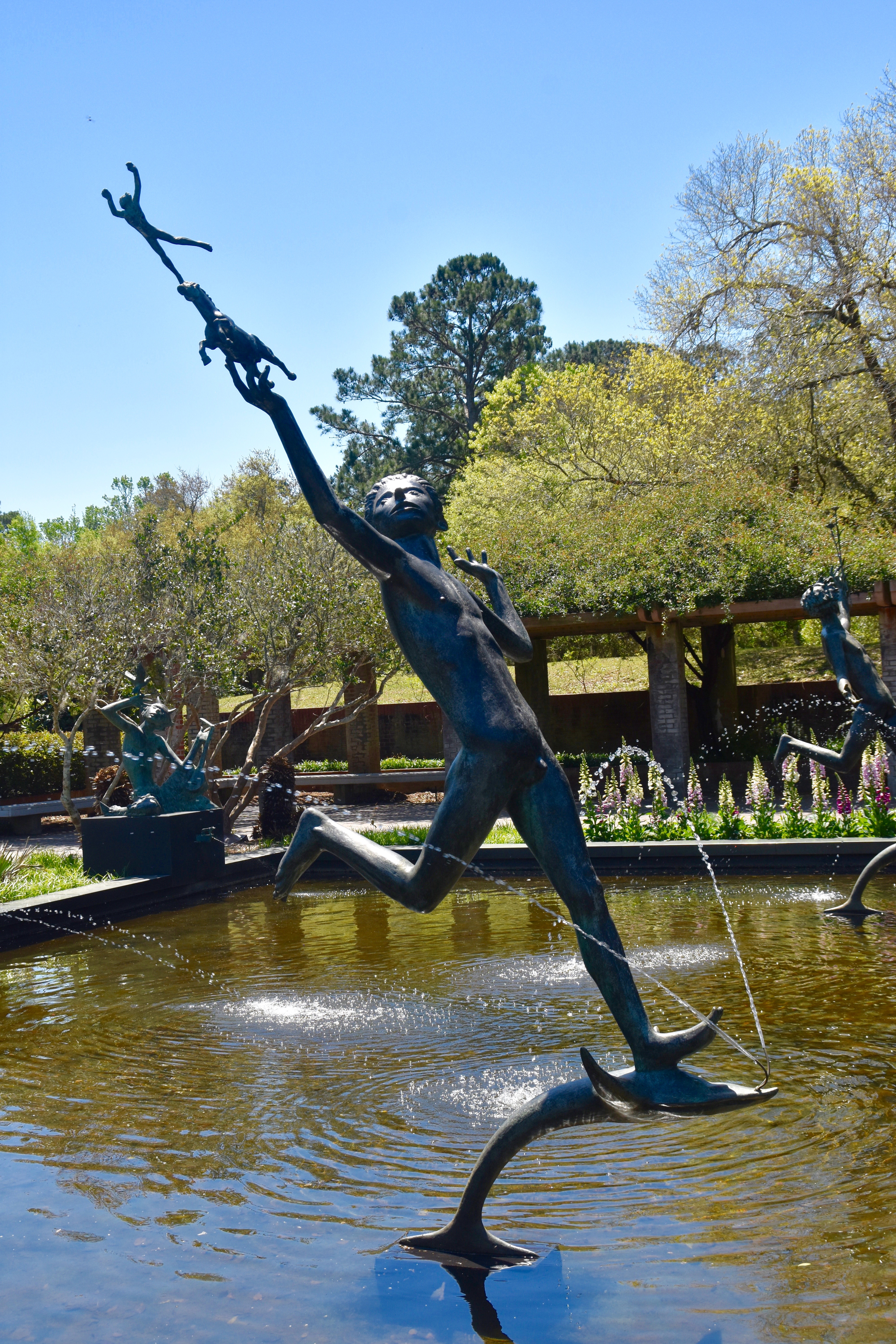
Probably the most celebrated American sculptor is Augustus Saint-Gaudens who, despite his name, was born in Ireland and emigrated to the United States where he became prominent after studying the craft in Europe. He is represented at Brookgreen Gardens with several works including this magnificent Pegasus with Bellerophon (not Perseus as is often mistakenly believed). Saint-Gaudens is also responsible for the Diana fountain at Brookgreen.
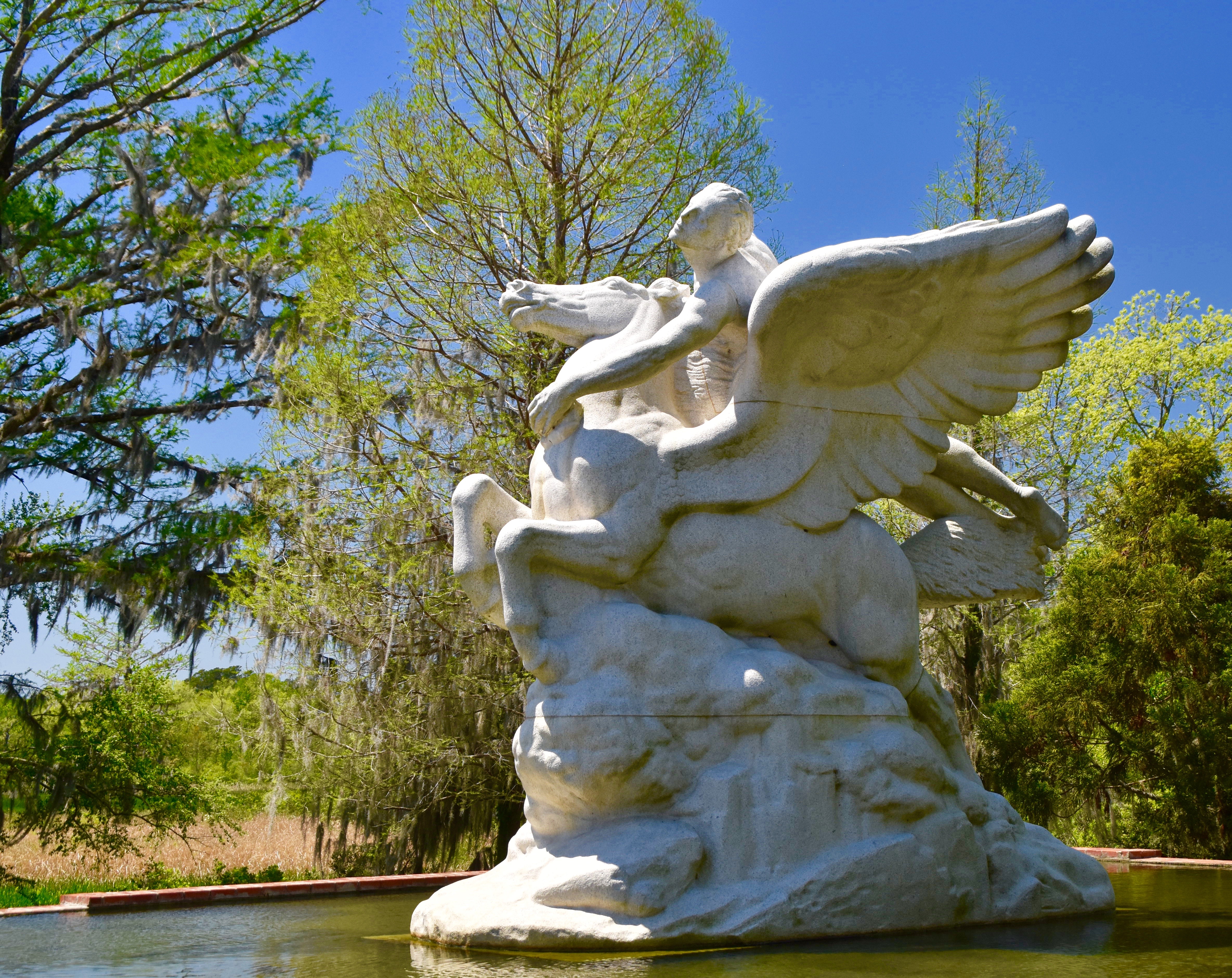
One last mythological sculpture and I’ll move on.
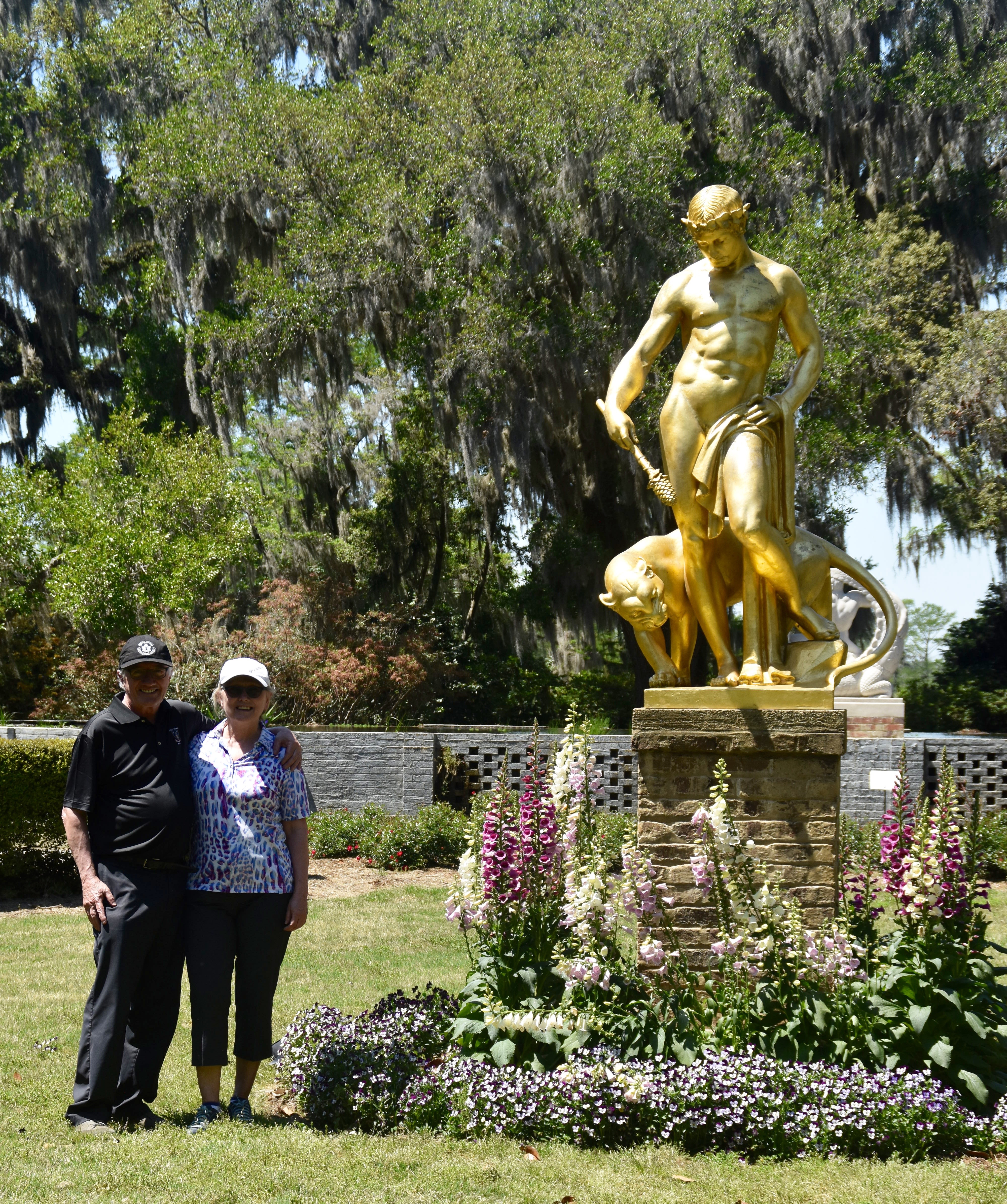
This is Alison and me with the Dionysius- portrayed as a young god with a panther by sculptor Edward McCartan. This work literally gleams in the sunlight and draws you to it from all over the gardens.
The Hungtington’s were not prudes and there is an abundance of nude sculpture some of which are quite erotic, something that might surprise visitors to this usually conservative part of the country. Here is one example.
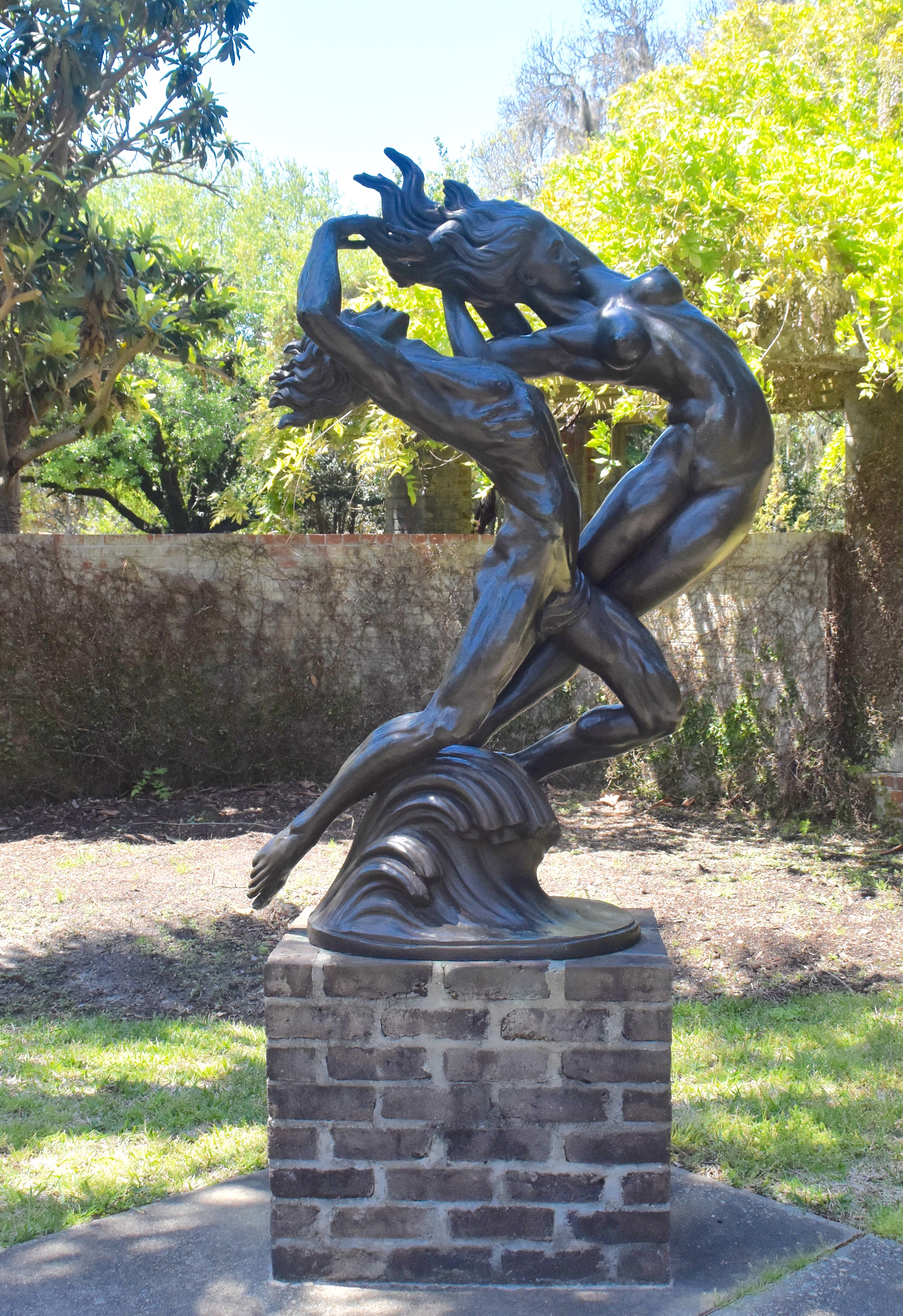
Another major theme at Brookgreen Gardens is animals, real and imagined. This bighorn ram is an example of the former.
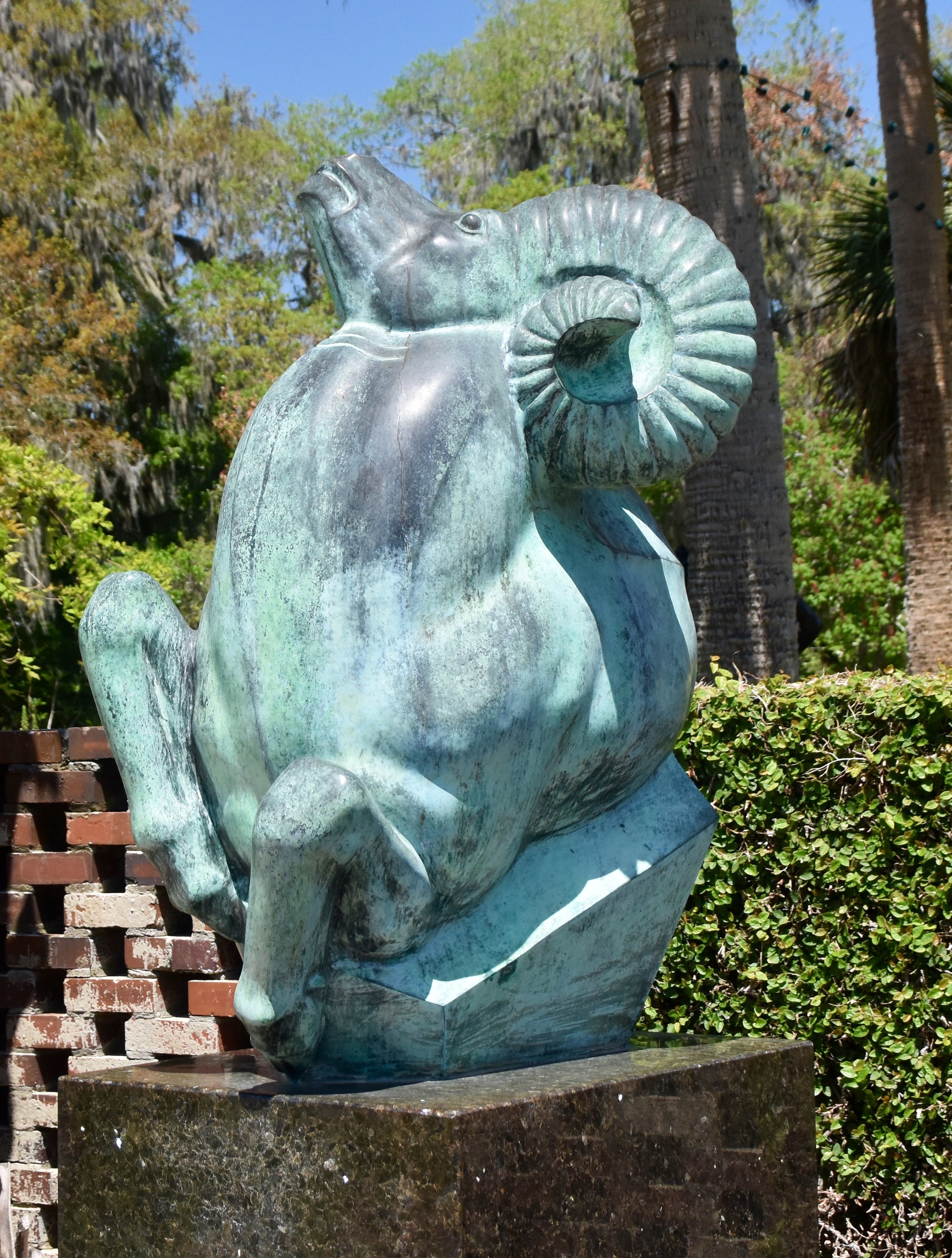
And this an example of the latter.
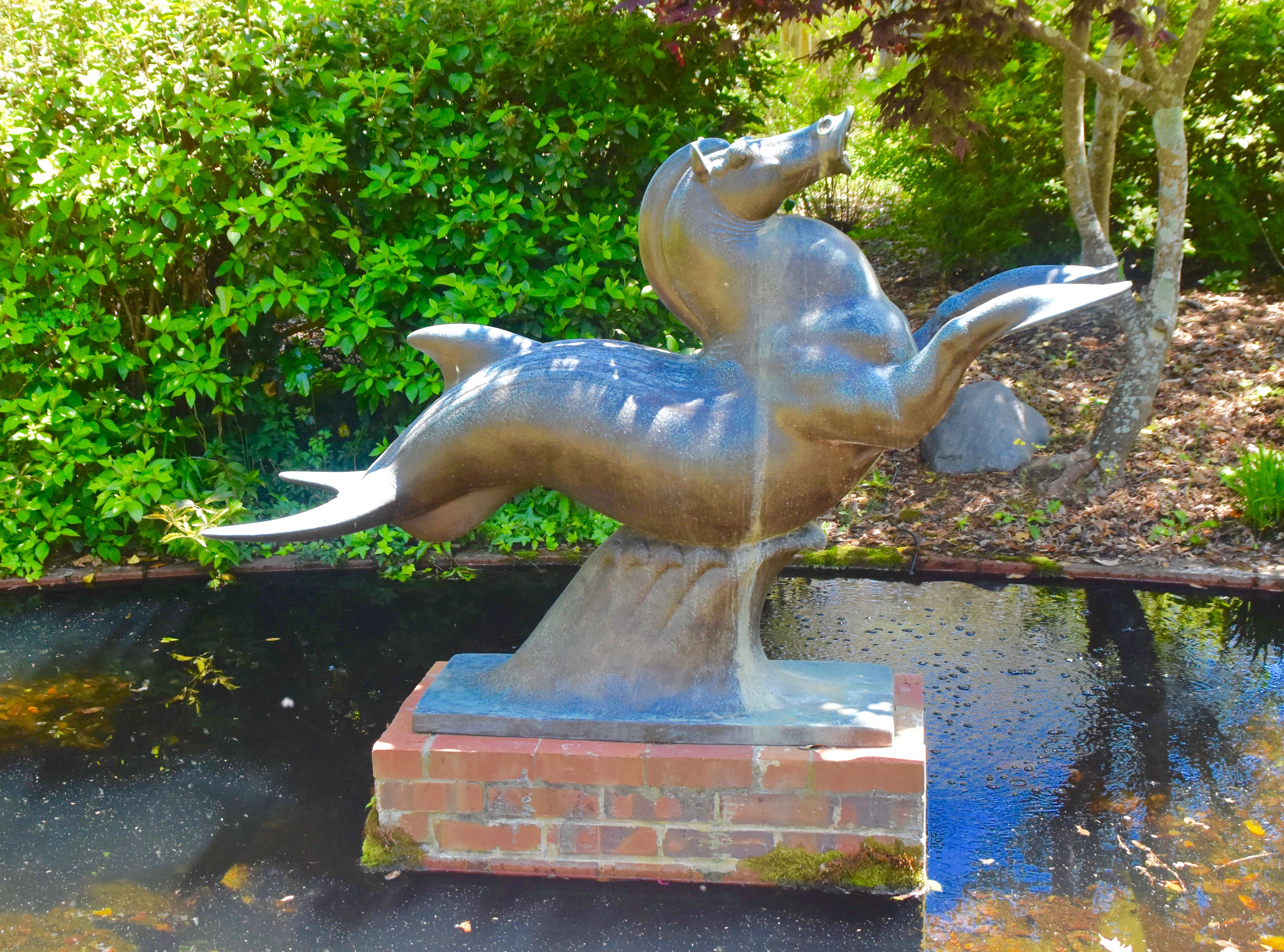
Others are quite amusing like these very determined squirrels.
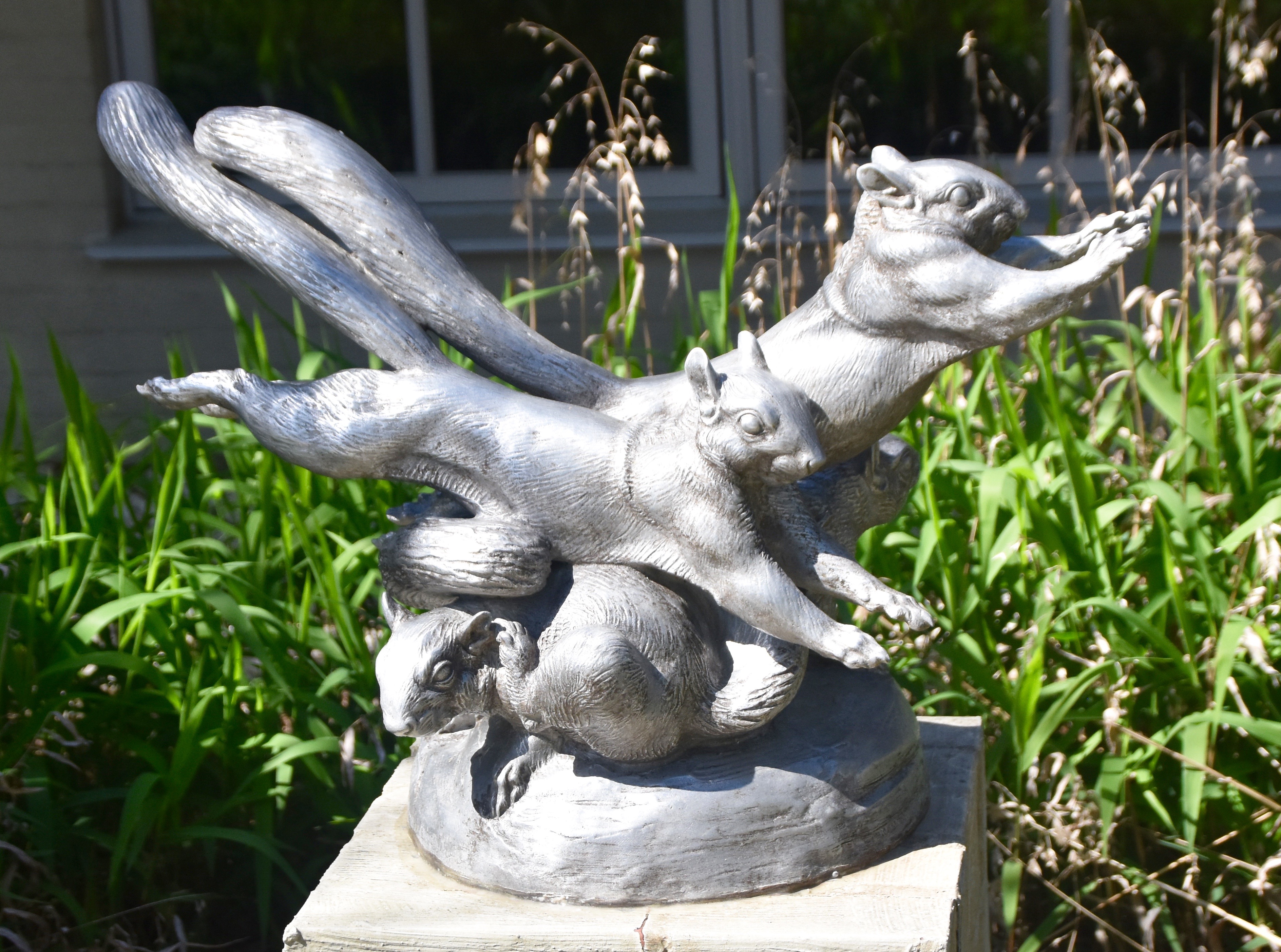
One area not to be missed is the Brown Sculpture Court where dozens of smaller works are on display in a classical setting.
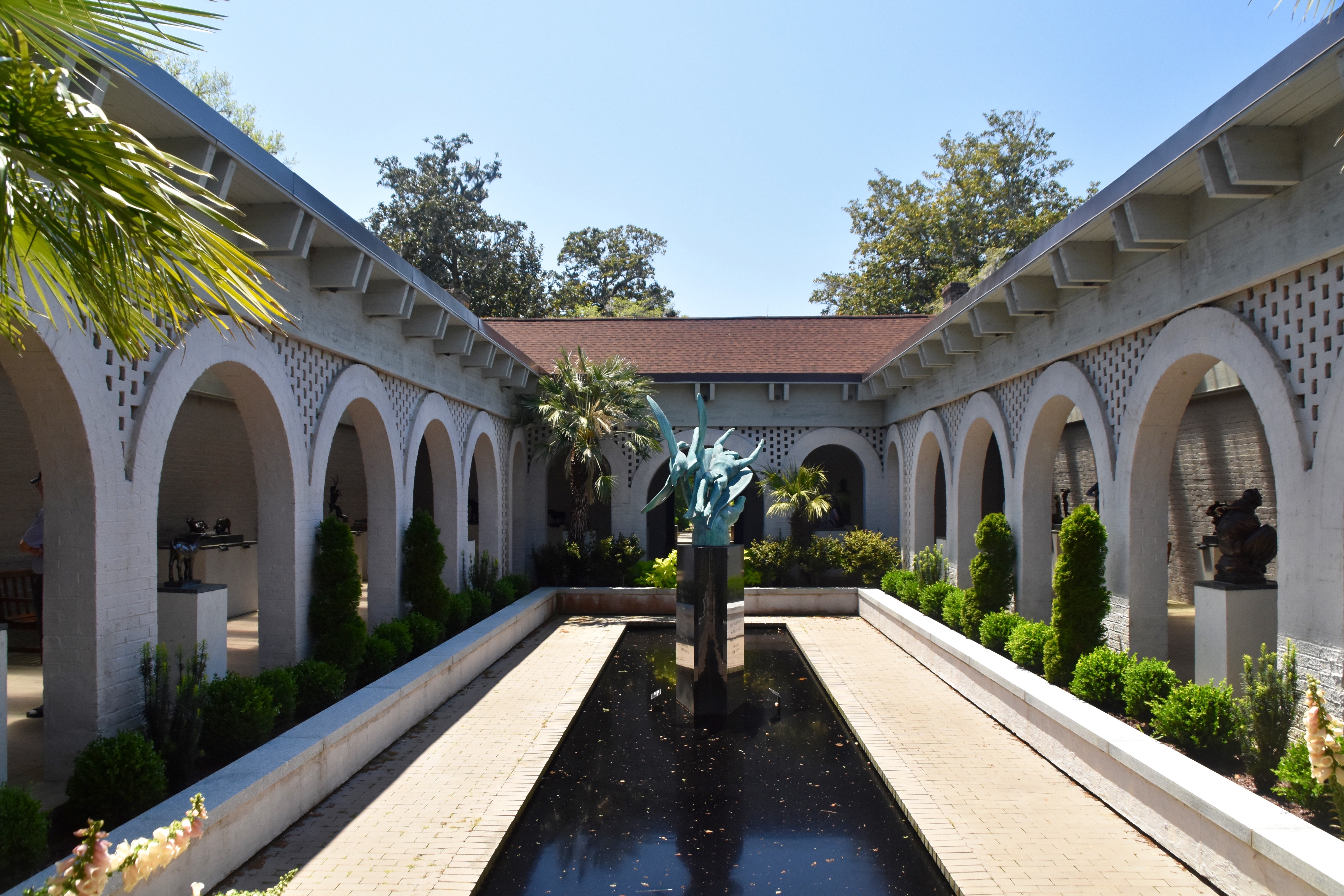
This Icarus falling from the sky after his wax wings melted by flying too close to the sun, captures perfectly that moment when he knew that his hubris had sealed his fate.
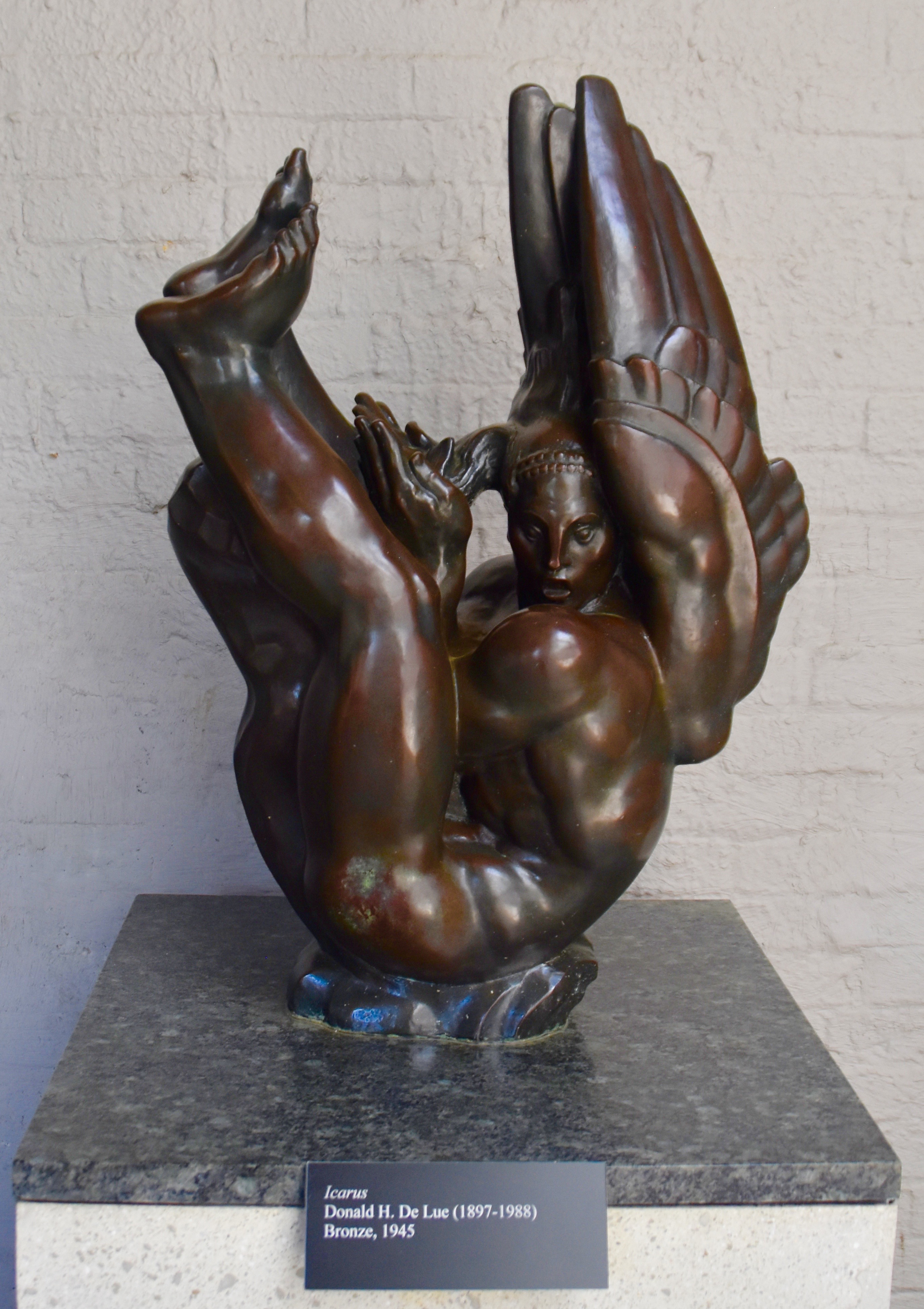
Alison and I particularly liked this work because it related directly to our home province of Nova Scotia.
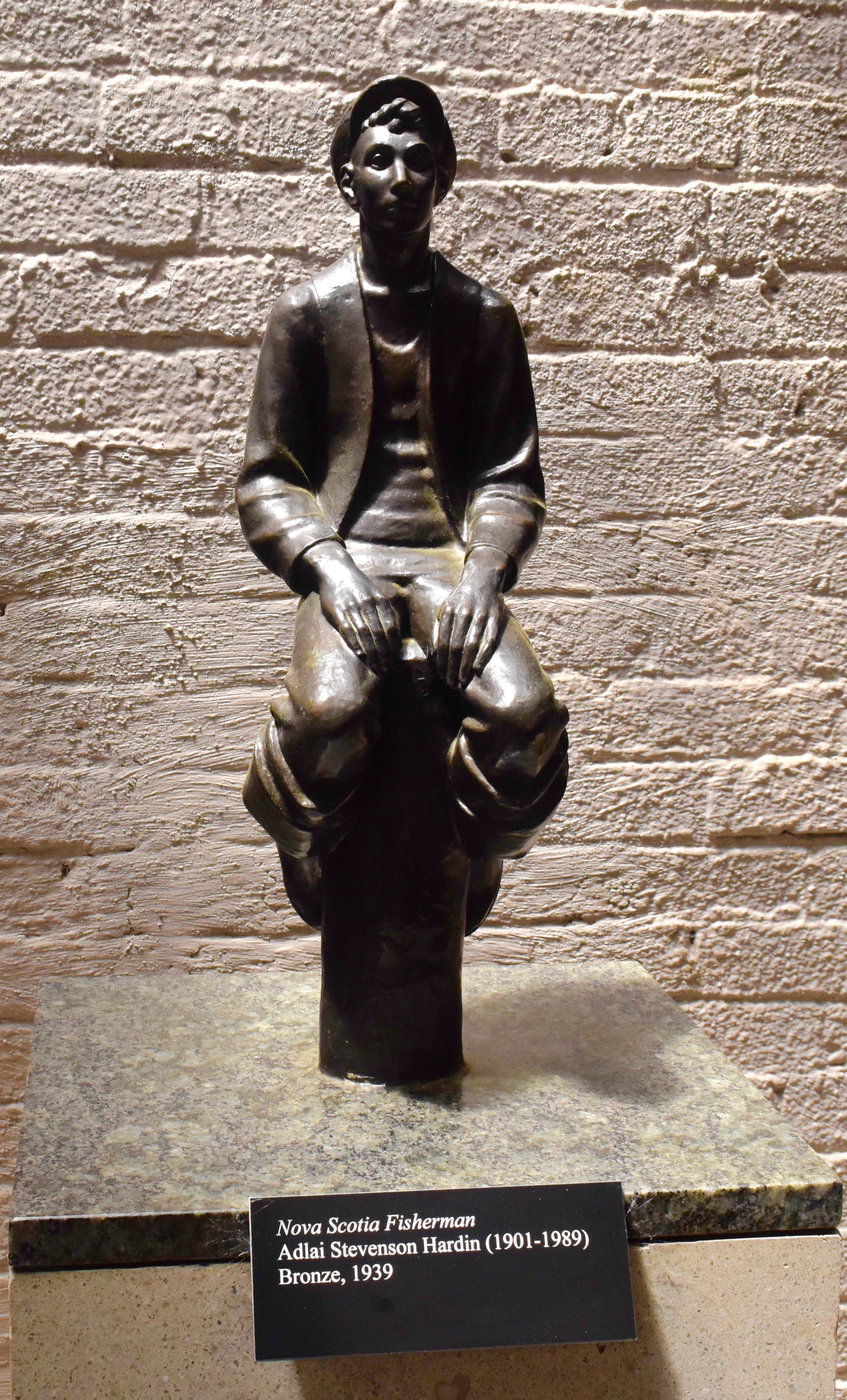
OK, that’s the sculptures, or at least a tiny sample of them. I mentioned earlier that Brookgreen Gardens is comprised of the lands of four different Low Country plantations which all specialized in growing rice. Although most of the plantation buildings are long gone, there are some very clear indications of the plantations, most notably Live Oak Allee which contains 250 year old live oaks planted to create a shaded walkway leading to Brookgreen plantation. It is a very tranquil place to just sit on a bench and contemplate the beauty of this place.
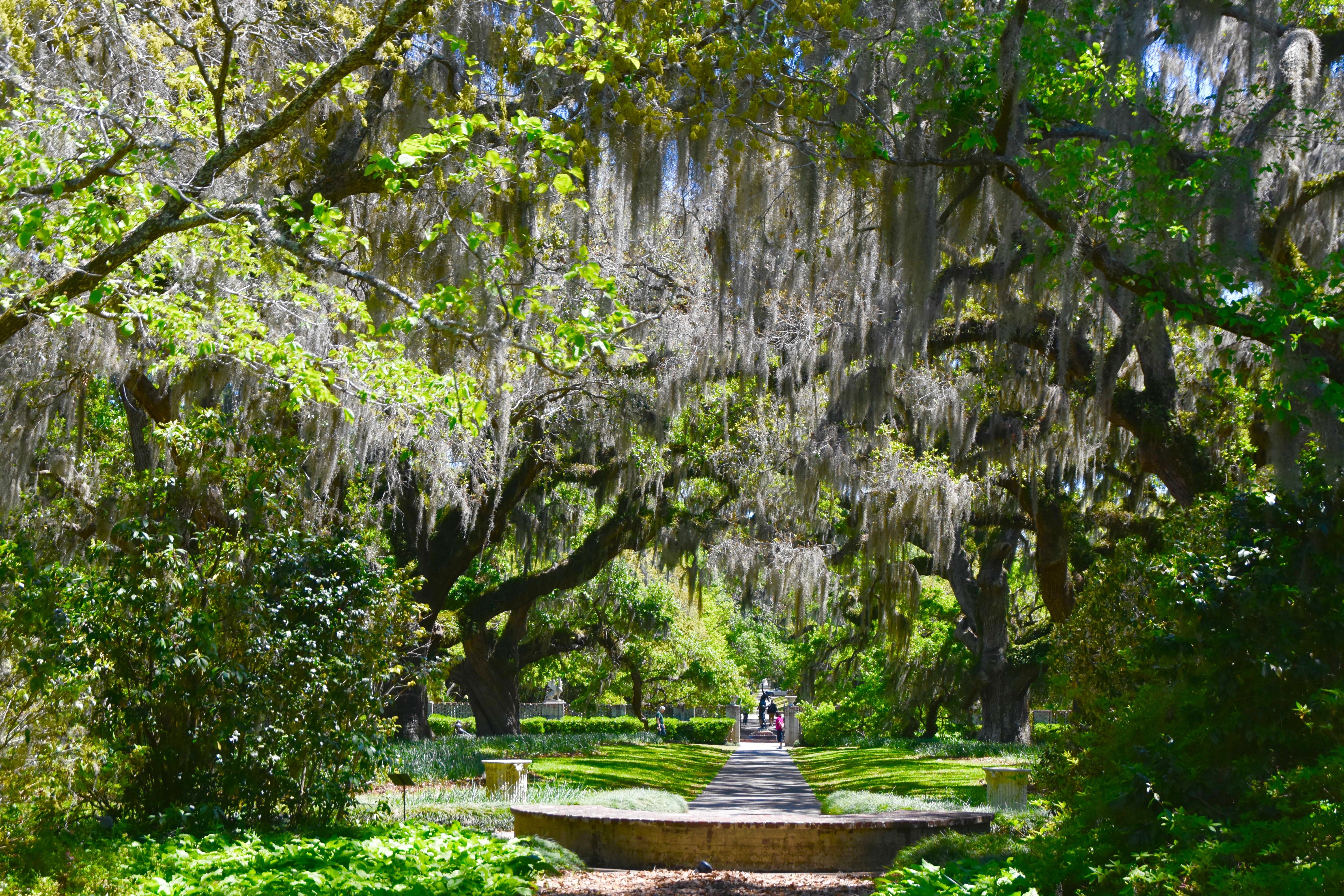
The Low Country Trail
When Alison and I returned a second time to Brookgreen Gardens on this most recent visit it was to see some of the attractions that first time visitors often overlook starting with the Low Country Trail. This starts at the Low Country Visitor Center where a 92 year old docent (I kid you not) who could easily pass for 70, gave us a meticulous tour of the map of the Waccamaw River area that covers the floor. She pointed out the extent of the four rice plantations and how life along the Waccamaw had change during her lifetime.
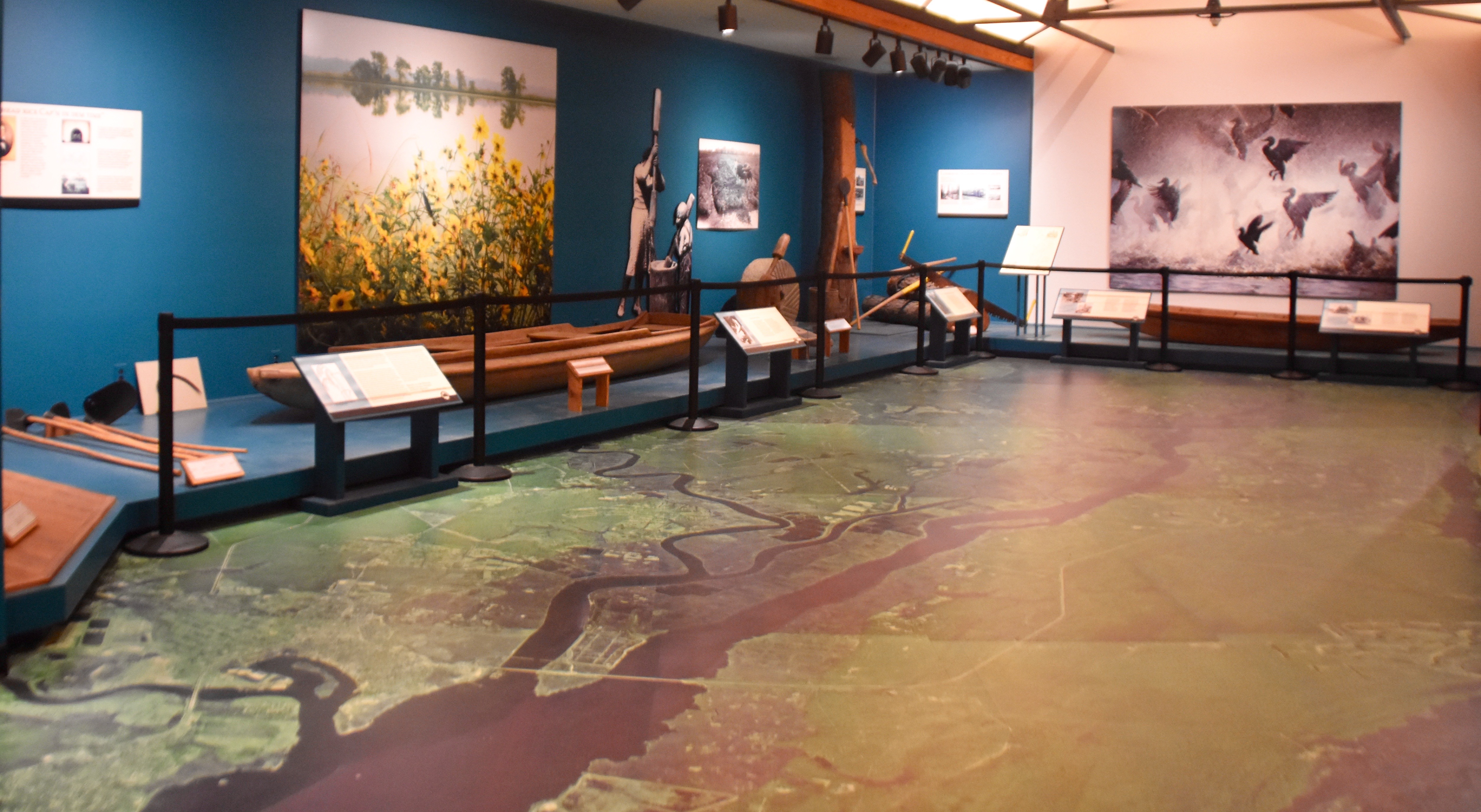
From here you follow a guided path overlooking the former rice fields.
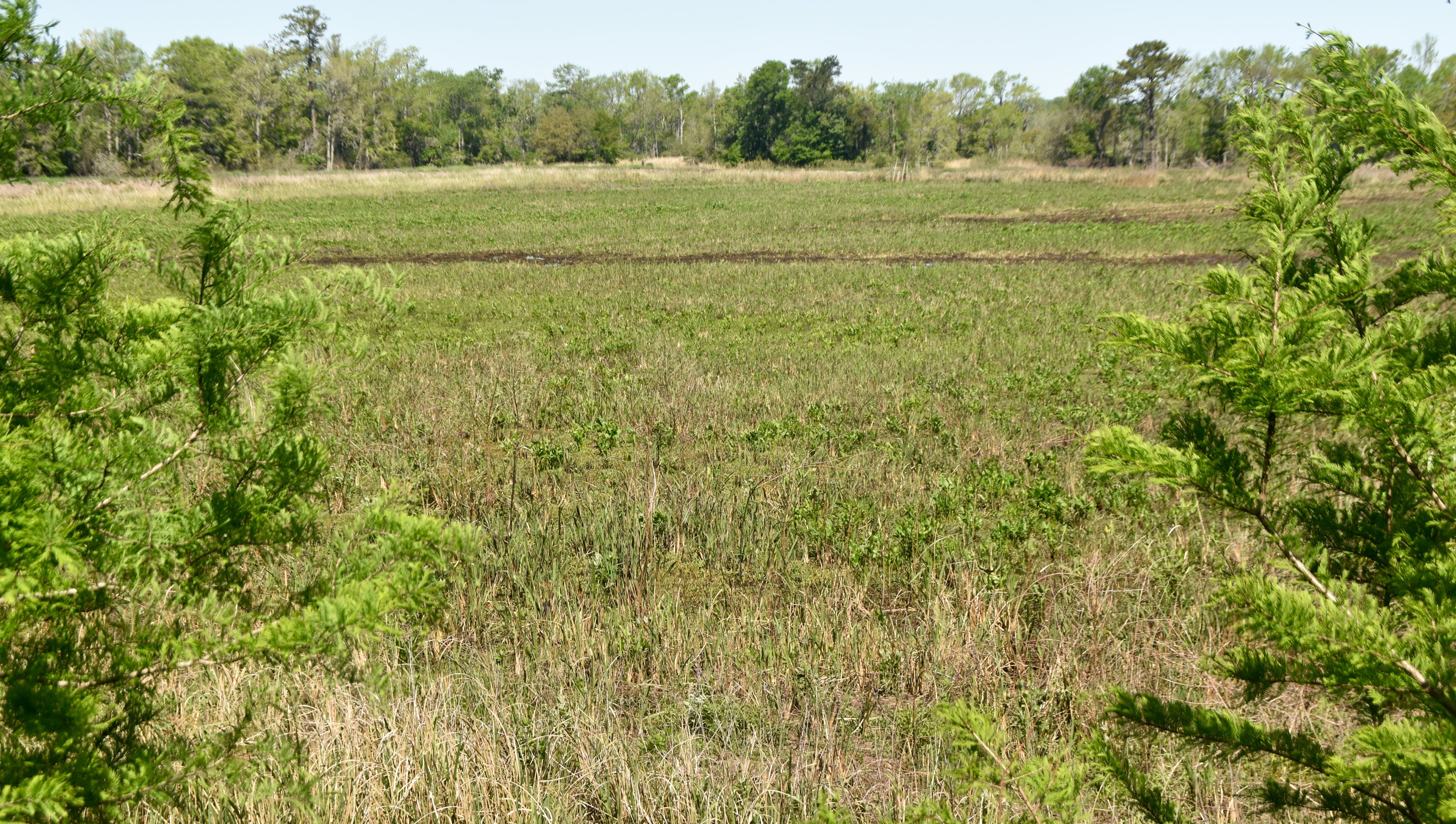
Along the way there are frequent stops to listen to audio commentary on life on the plantation from the perspectives of the owners, the overseers and the slaves. Each group is represented by a distinct sculpture. This is The Overseer, an often ominous figure on these plantations.
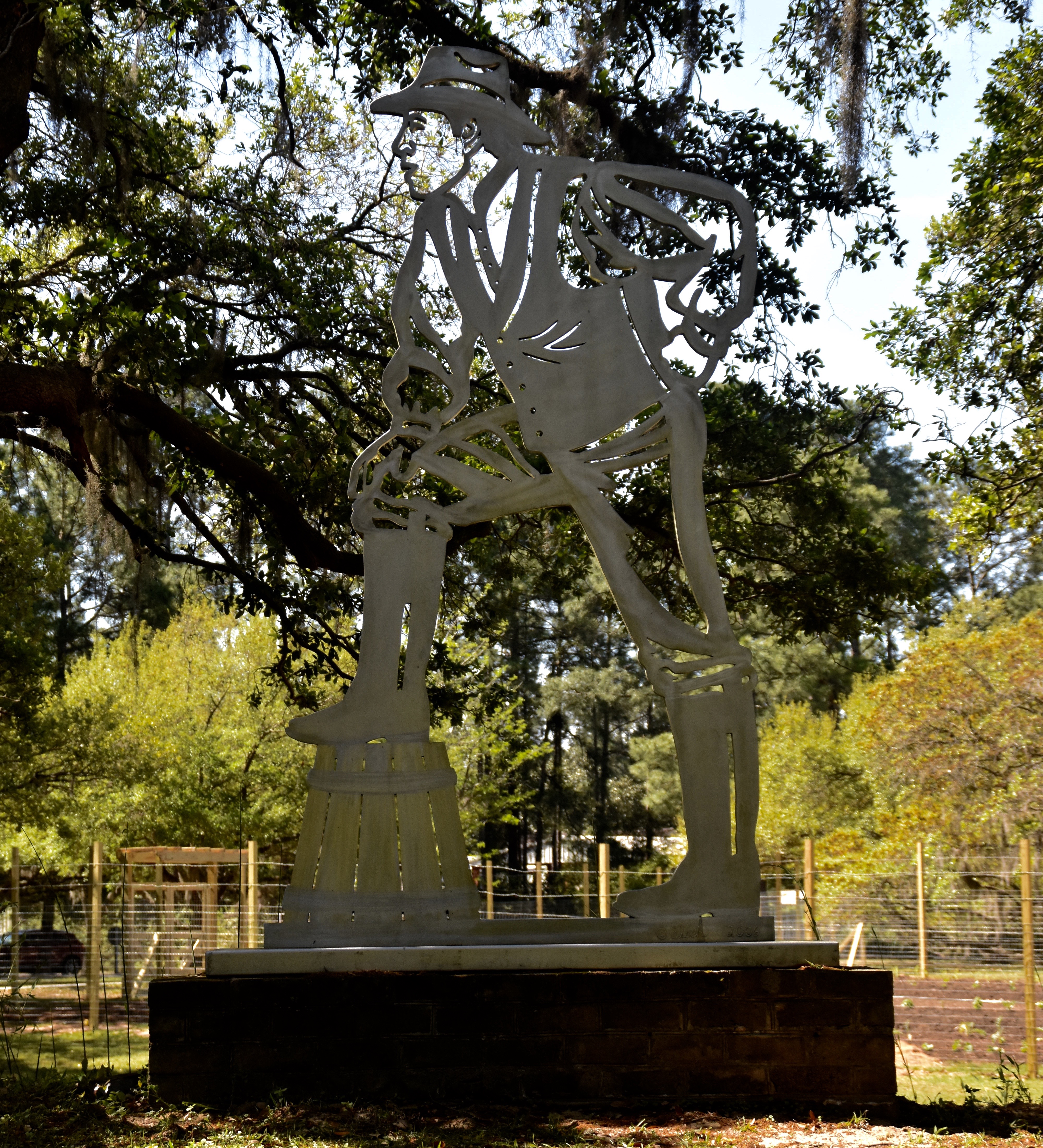
Also on the Low Country Trail you can see the remains of what must have been one of the largest cypress trees in South Carolina. The rice fields did not exist naturally and were once vast cypress swamps; thought to be productively useless, but now recognized as one of the most vibrant and rich environments in the south.

The Oaks Plantation Tour
Brookgreen Gardens offers a number of tours to areas of the property off limits to visitors except on these special tours which start from the Low Country Center. Probably the most popular is the pontoon boat ride which heads out into the former rice fields and explains the history and exploitation associated with plantation rice growing as well as the flora and fauna of the Waccamaw River area. It was sold out on our second visit so we opted for the Oaks Plantation Tour which cost an addition $8.00 and lasts just under two hours.
This tour in a small bus is led by a driver/guide Don Allison who heads out on fairly rugged back roads to the remains of The Oaks plantation where a walking tour of the most important sites of what was once the home of the Alston family.
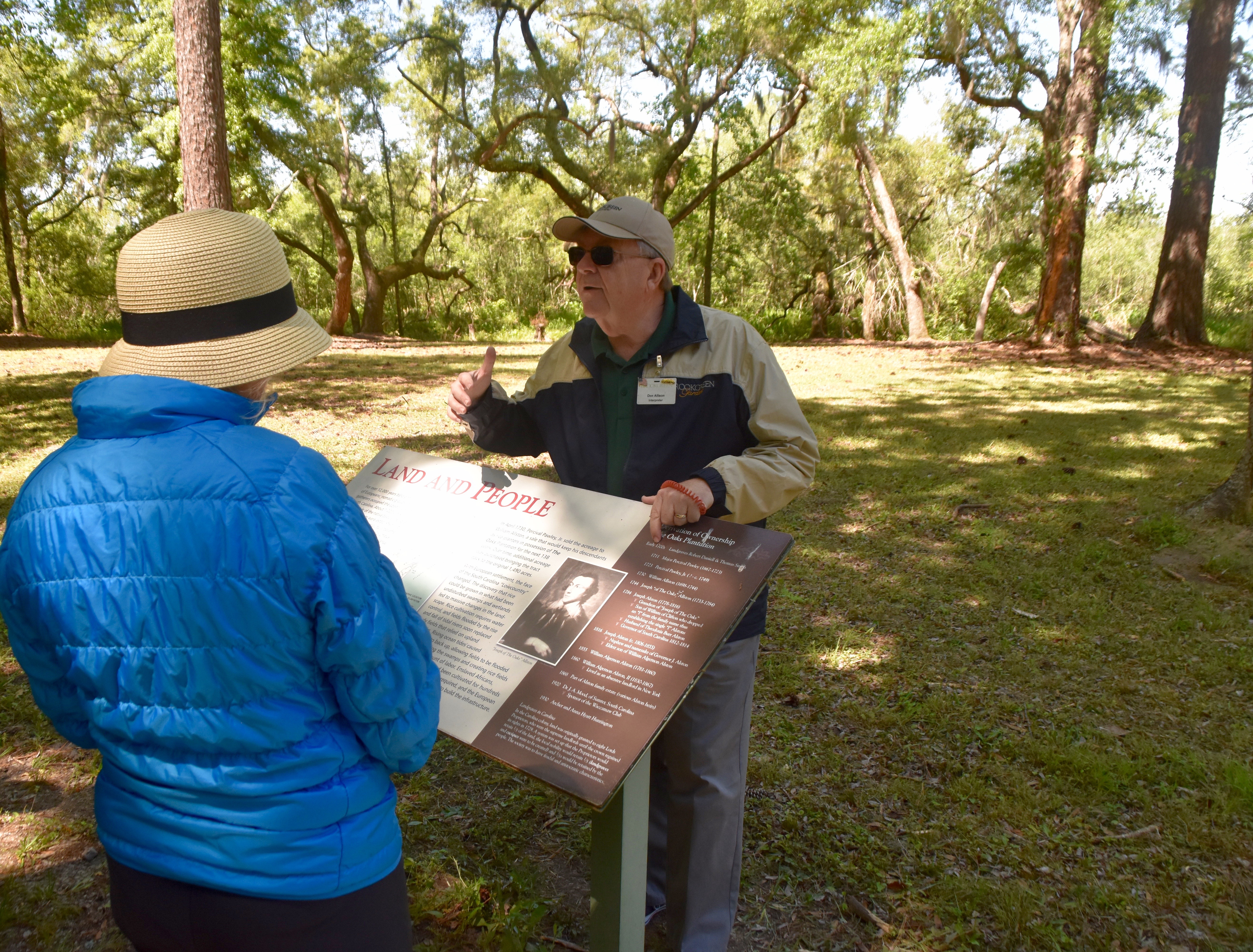
The highlights definitely include the Alston Family Cemetery and the story of the death of Aaron Burr’s only child, Theodosia Burr Alston who was married to Joseph Alston, former governor of South Carolina. She was lost at sea at age 29. It is hard to imagine that the people buried in what is now a remote and largely forgotten cemetery were once the movers and shakers of South Carolina society.
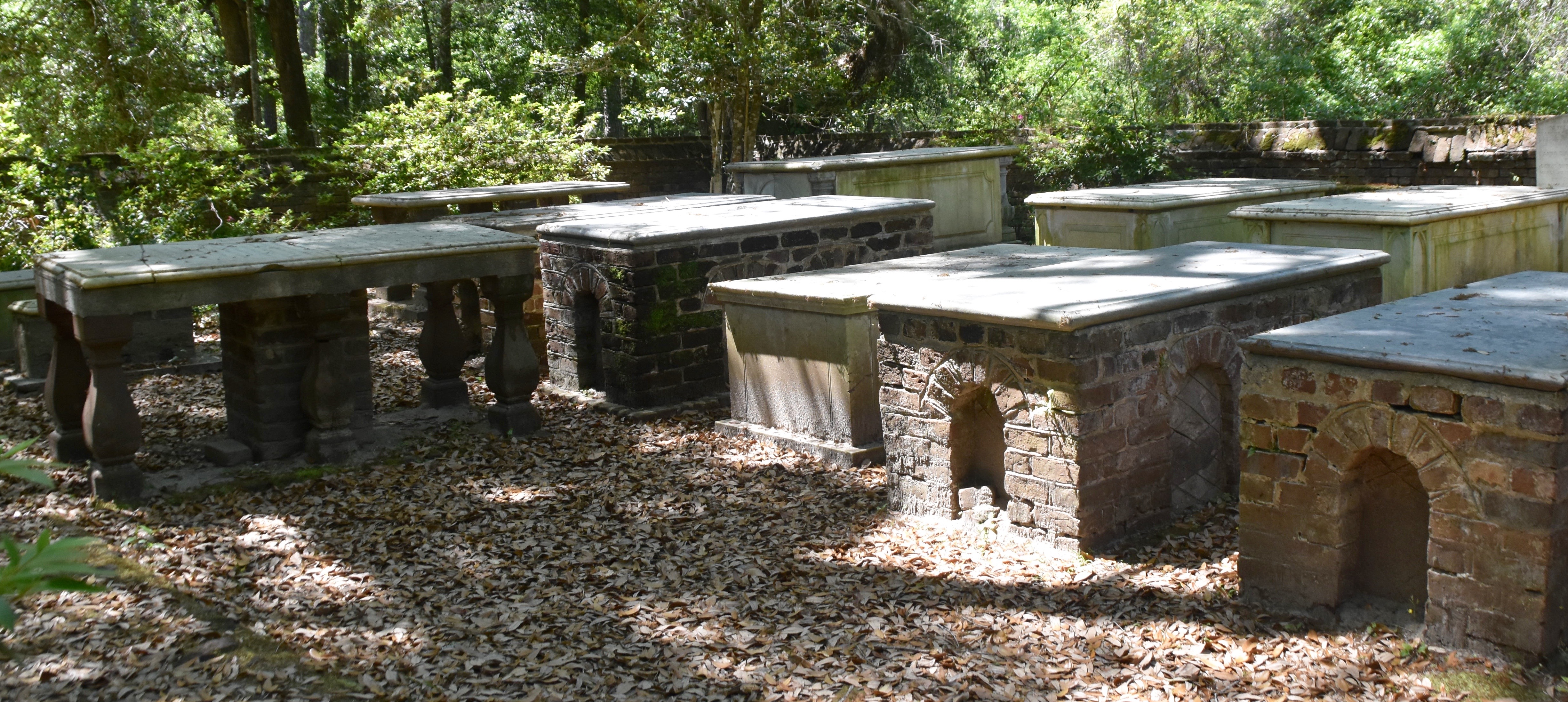
This is the grave of Joseph Alston and his son Aaron Burr Alston.
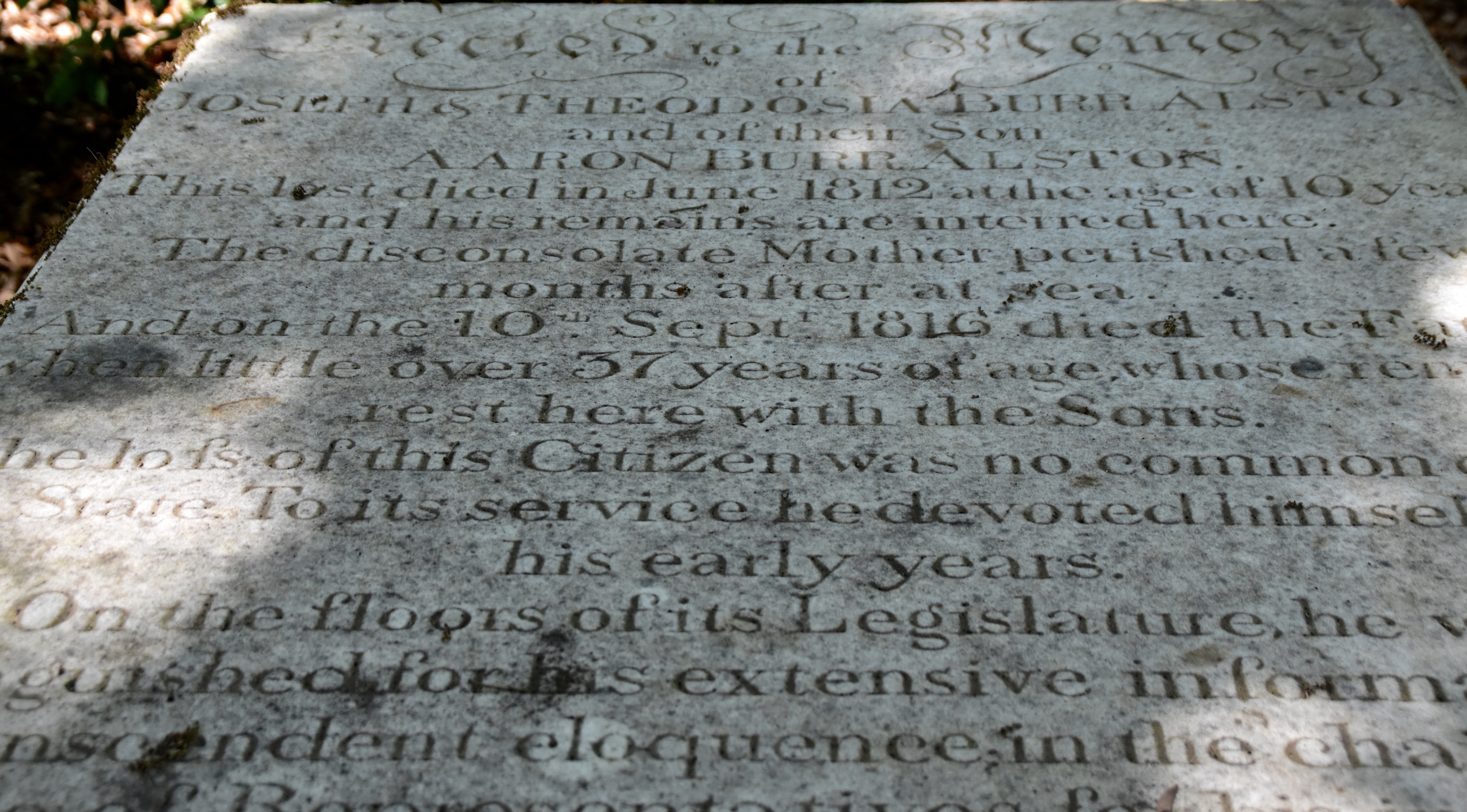
Also of interest is the stop at the former slave quarters where evidence of everyday life of a rice plantation slave can still be found.
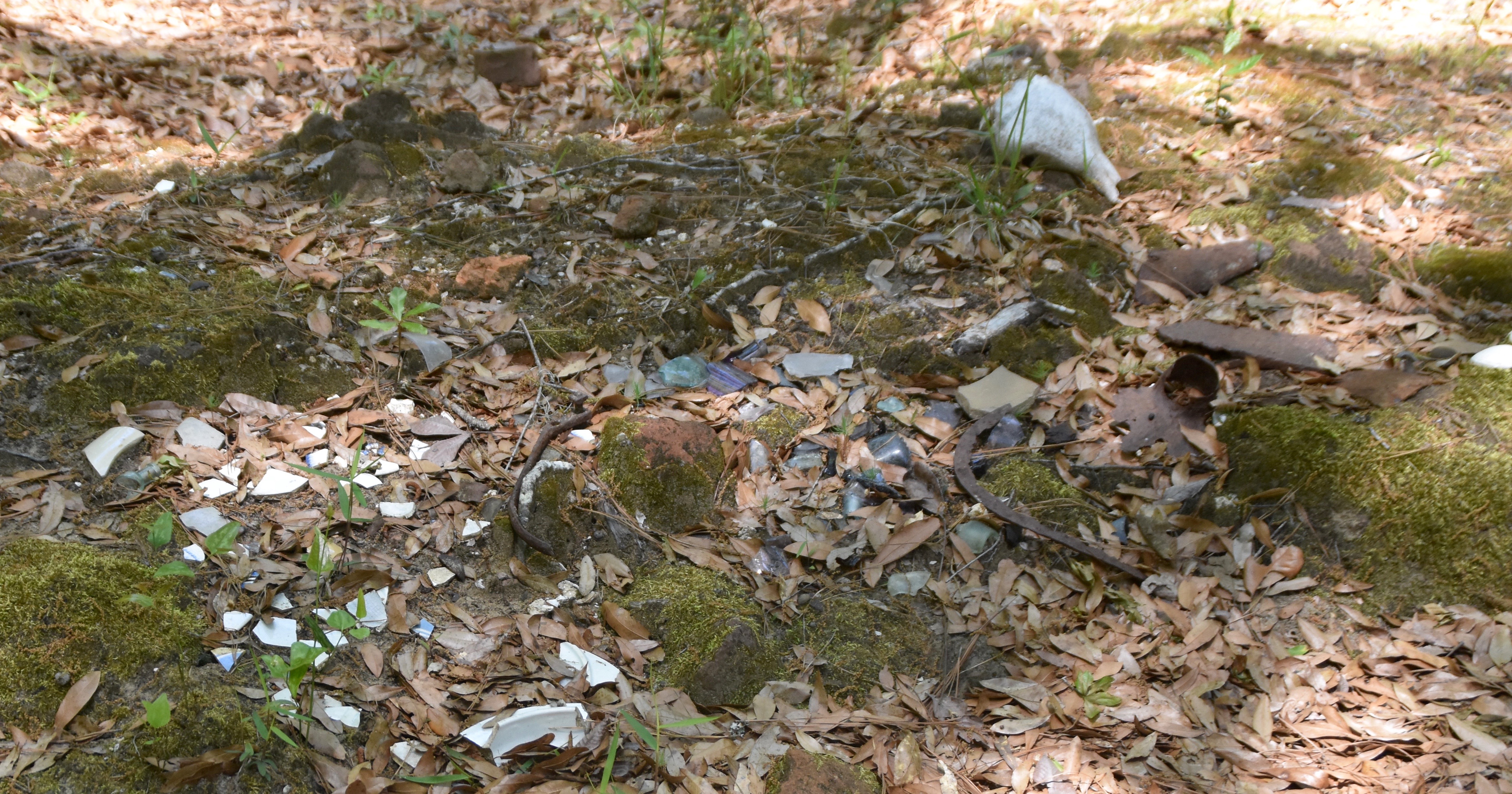
Overall the Oaks plantation tour was informative, interesting and well worth the time. Brookgreen Gardens also offers a Springfield/Laurel Hill plantations tour that features a Civil War earthen fort and a former rice mill. That along with the boat tour gives us a great reason to return for another visit.
The Low Country Zoo
Our last stop at Brookgreen Gardens was for a quick walk around the small Low Country Zoo which, not surprisingly, features only animals that inhabit the South Carolina Low Country. These include river otters.
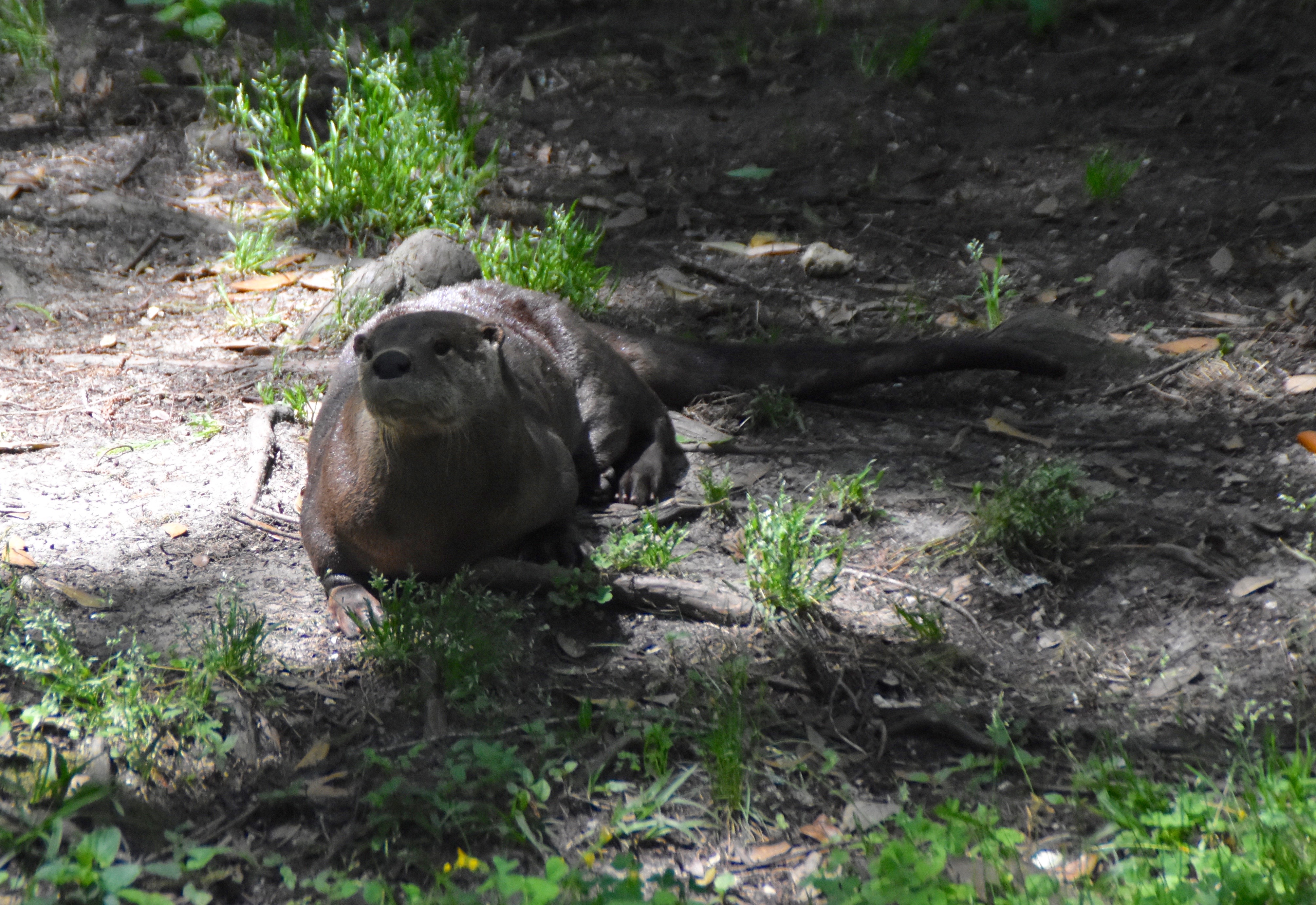
Many birds and turtles, including this black-crowned night heron.
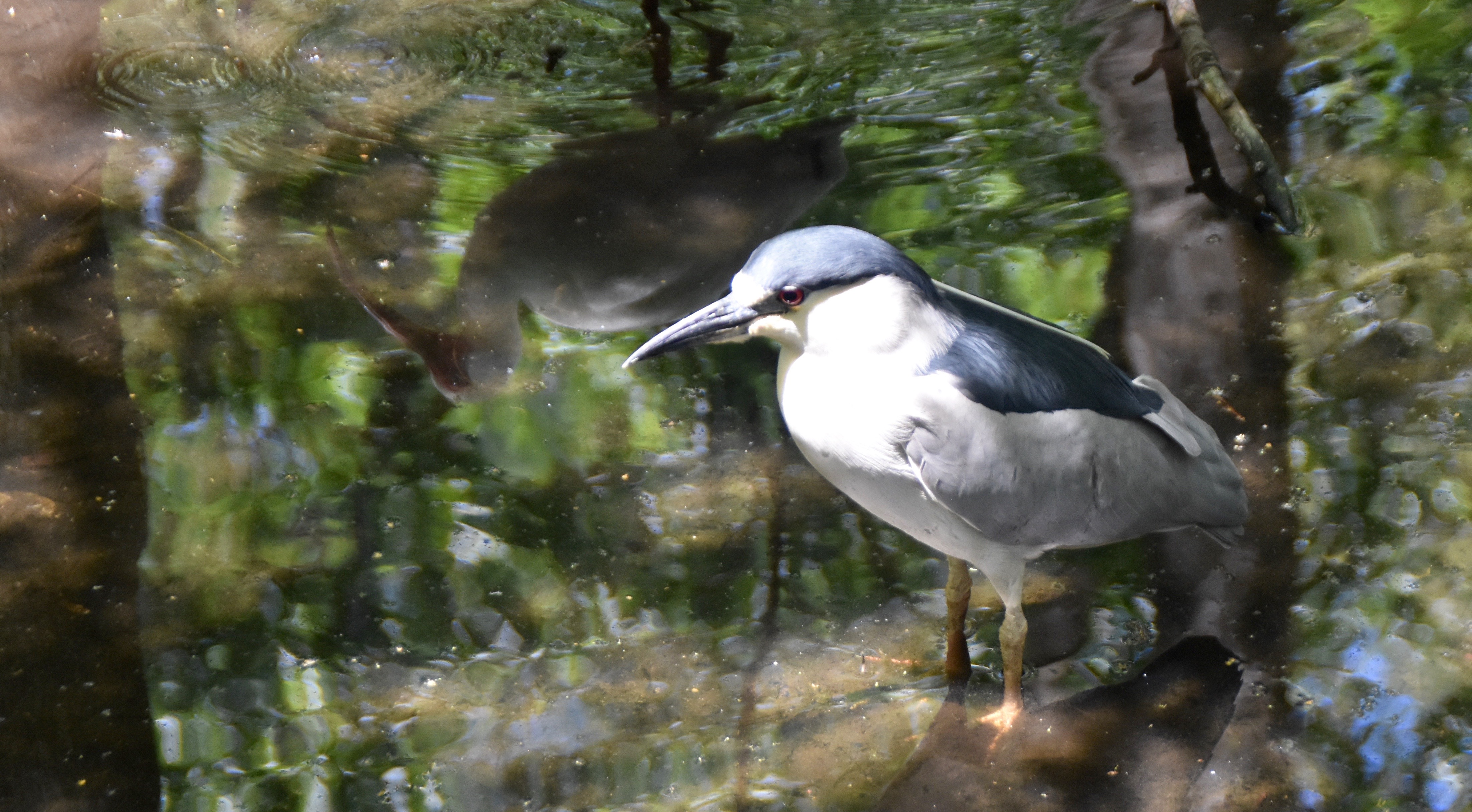
And one definite surprise. This is a Spanish Goat. Although originally not native to the U.S. they were brought here way back in the 1500’s by the Spanish. By the early 1900’s there were virtually no pure bred Spanish goats left except for a small population on an isolated island off the South Carolina island. In the interests of preserving ‘heritage’ species of livestock some of these goats were brought to Brookgreen Gardens to maintain their species identity. Just one more interesting aspect of this place that never ceases to stop teaching people who are willing to learn.
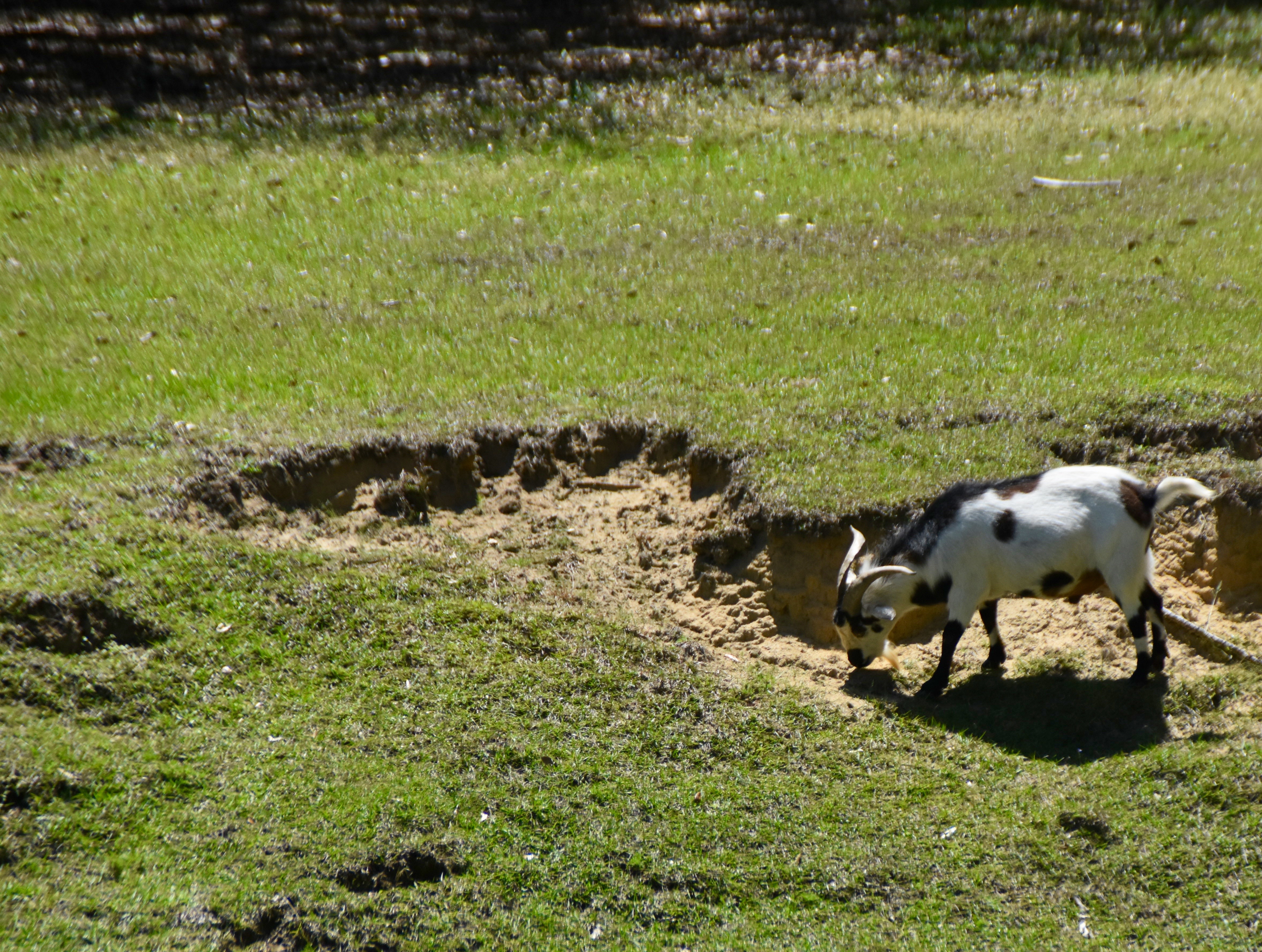
Well time to sign off on this post that began with millionaires and ends with goats. I hope I have convinced you that the next time you are in the Myrtle Beach area you must visit Brookgreen Gardens.

